-
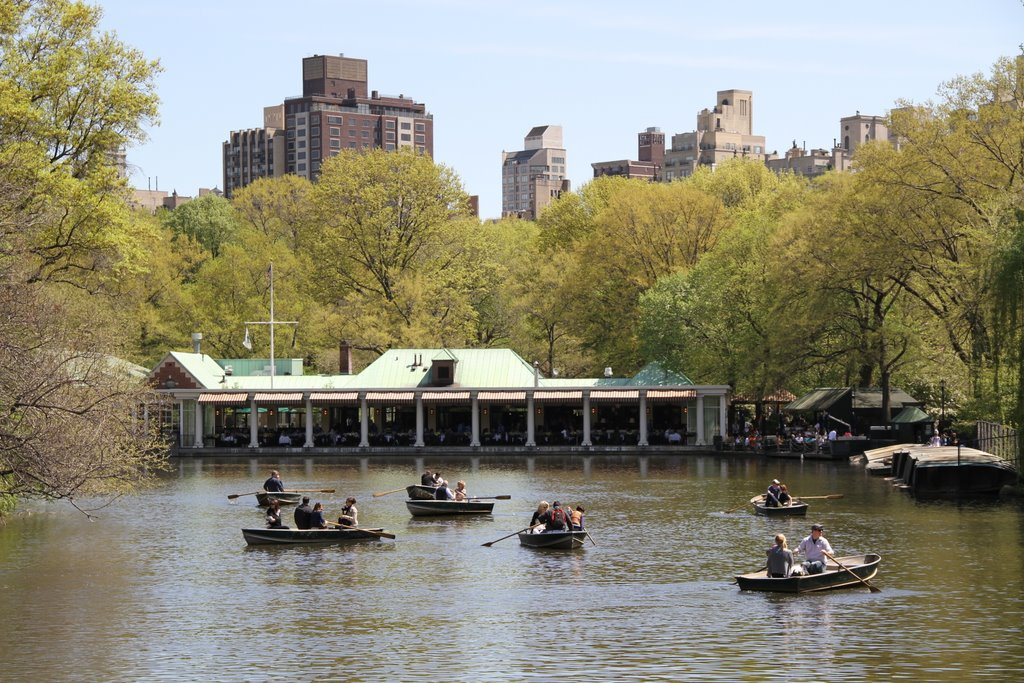 Harlem Meer Restoration
Harlem Meer Restoration 1995 Rudy Bruner Award for Urban Excellence - Silver Medal
The Harlem Meer project restored 17 acres in the northeast corner of New York City’s Central Park, reconnecting it to surrounding inner-city communities. The Central Park Conservancy and City of New York Department of Parks and Recreation worked together to clean up a polluted 11-acre lake, restore the surrounding landscape, renovate a historic boathouse and playground, and build a new discovery center to revitalize the park and nearby neighborhoods.
The project restored a seriously degraded natural habitat and returned a beautiful and important amenity to the area. The Charles A. Dana Discovery Center hosts free community programs and exhibits to educate visitors about the ecosystem and wildlife, and visitors can enjoy a wide range of activities, including fishing, skating, and swimming. The Harlem Meer has helped reintegrate the north and south ends of the park, and the Conservancy worked closely with local neighborhoods throughout the planning process.
-
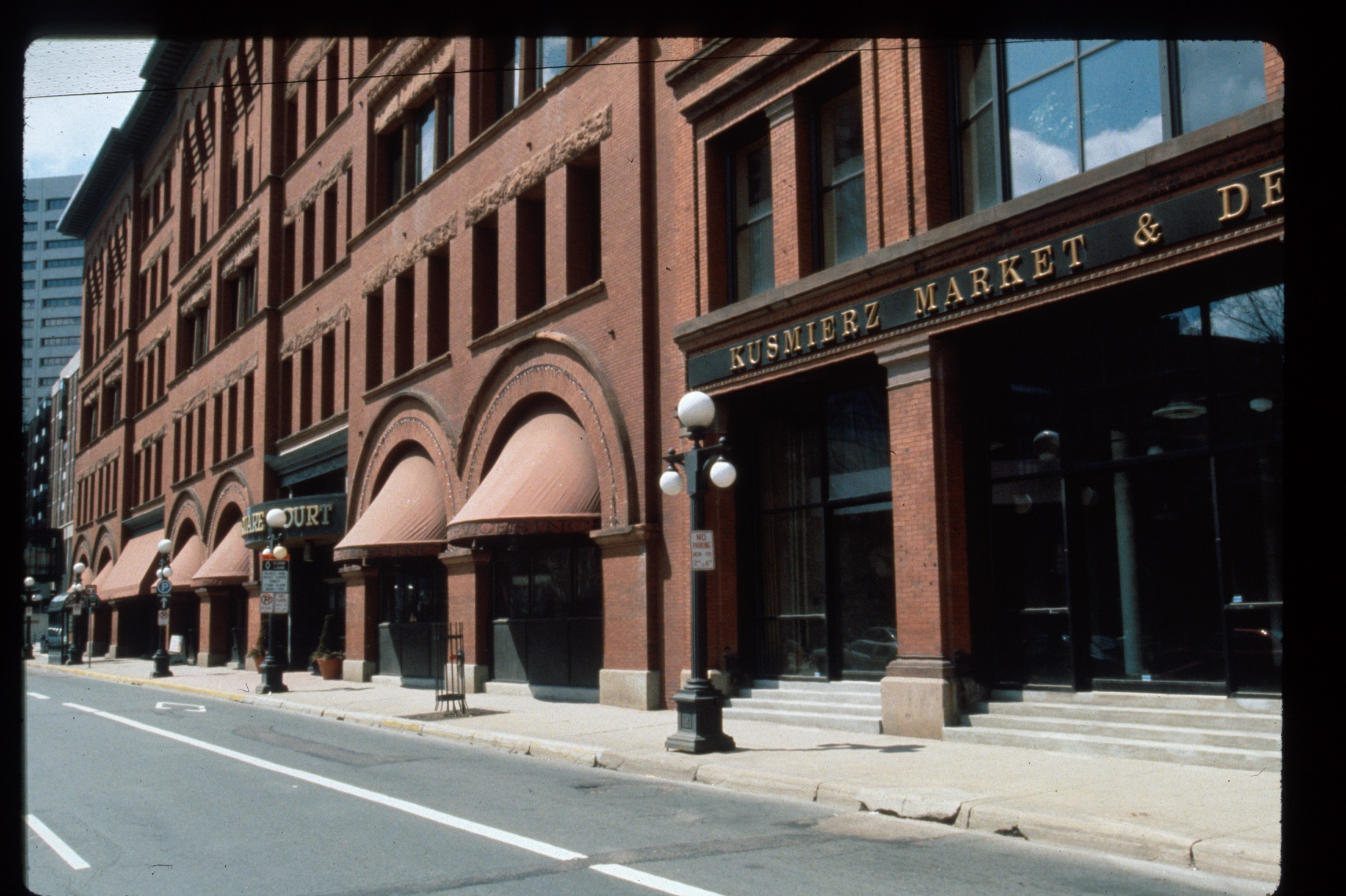 Lowertown
Lowertown 1995 Rudy Bruner Award for Urban Excellence
Lowertown is an urban renewal project that transformed an underused warehouse district in downtown St. Paul, Minnesota, into a vibrant, mixed-use urban village. For over 20 years, the city took a comprehensive approach to the redevelopment of the historic neighborhood, which is now home to thriving art studios, entertainment centers, local businesses, parks, and walk-to-work housing. The project was envisioned not as a short-term fix for a declining neighborhood but as a long-term approach to creating a vital, dynamic, economically viable, and desirable new urban neighborhood.
The successful redevelopment is the result of a collaboration between public agencies, private lenders, foundations, neighborhood organizations, artist communities, business associations, and other local organizations. More than 70 projects have been completed, and the gradual approach has allowed for incremental, preservation-oriented rehabilitation; retention of community self-reliance; and maximum leveraging of private investment.
-
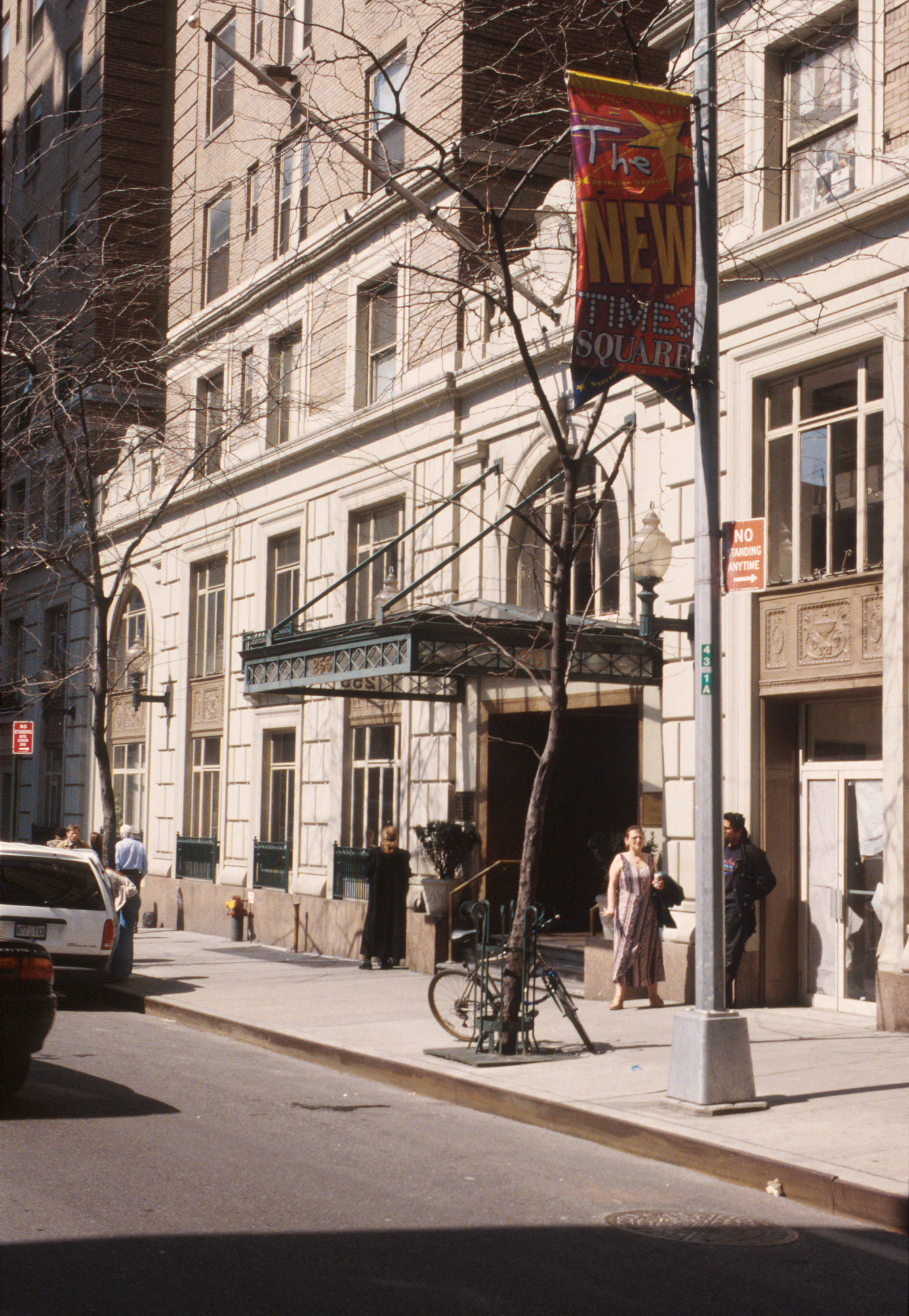 The Times Square
The Times Square 1997 Rudy Bruner Award for Urban Excellence - Gold Medal
The Times Square in New York City transformed a dilapidated midtown hotel into a large-scale supportive housing development for people in need. Between 1991 and 1994, Common Ground Community HDFC, Inc. spearheaded the renovation of the infamous single-room occupancy hotel in Times Square into 652 secure, single-occupancy units with affordable rents for formerly homeless individuals, low-income adults, the elderly and mentally ill, and people with HIV/AIDS. The ground floor offers commercial space for three retail operations that support job training and hiring programs.
The project combines excellence in design with an innovative housing model, social services, and job training, and it has helped stabilized a key corner in the ongoing revitalization of the Times Square district. Programming is designed to help tenants foster stability and independence, and the project demonstrates the feasibility of developing high-quality, cost-effective, large-scale affordable housing.
-
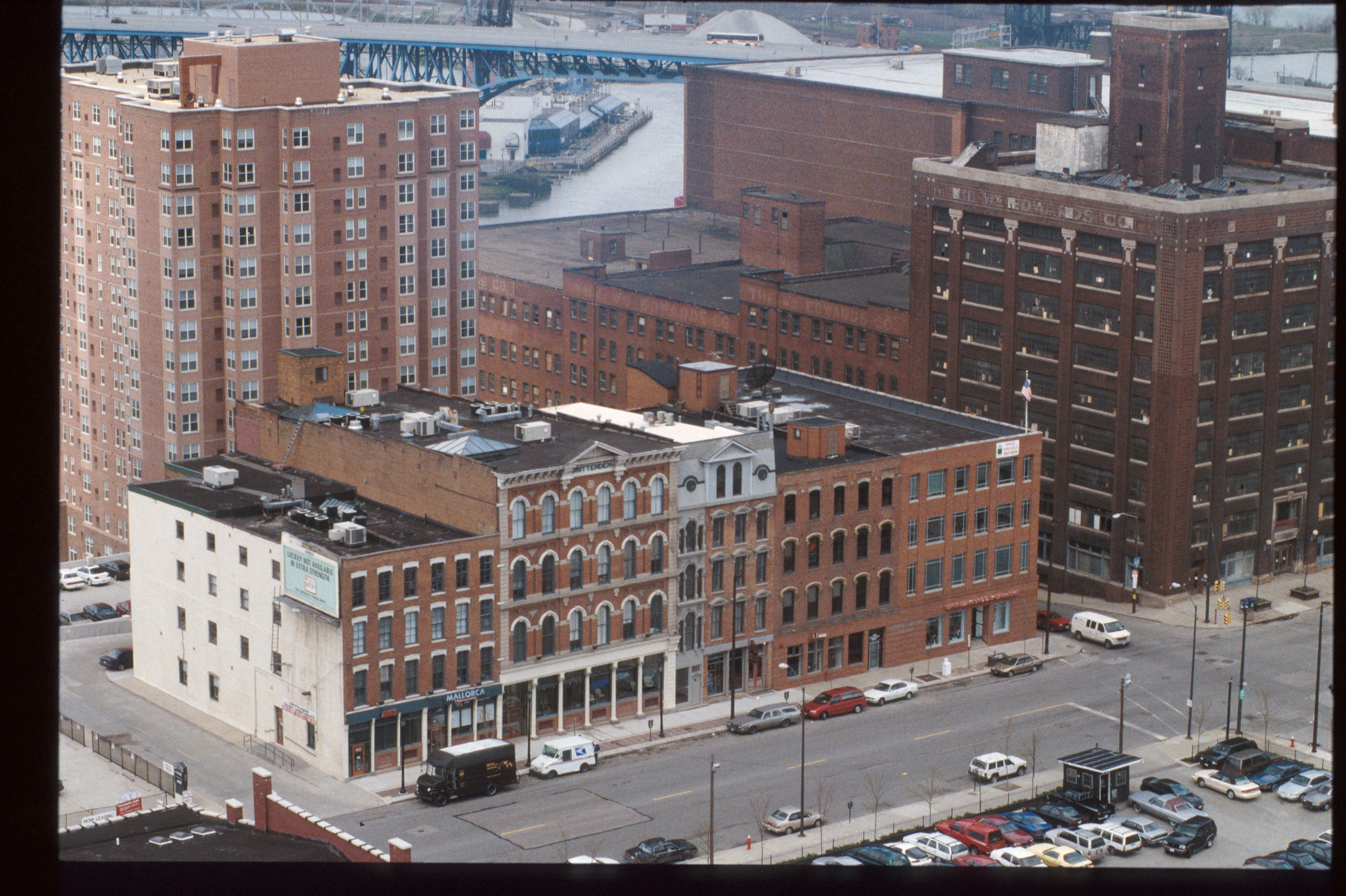 Cleveland Historic Warehouse District
Cleveland Historic Warehouse District 1997 Rudy Bruner Award for Urban Excellence - Silver Medal
The Cleveland Historic Warehouse District is an adaptive reuse project transforming vacant industrial and office buildings into residential and commercial space. The project was a response to the city’s demolition of the neighborhood in the 1960s-1970s, when more than half of the district’s historic structures were torn down and replaced with parking lots. Residents organized the Historic Warehouse District Development Corporation of Cleveland in time to preserve the oldest building in the area. The organization moved on to preserve many more important buildings, adapting them to create mixed-use and market-rate housing to entice the middle class to return to Cleveland.
The revitalization of the area includes retail shops, restaurants, jazz clubs, and commercial tenants in the heart of Cleveland next to the financial district. With a critical mass of 1,500 residents, the project balances preservation with new development and proves that they can be combined successfully to revitalize a district.
-
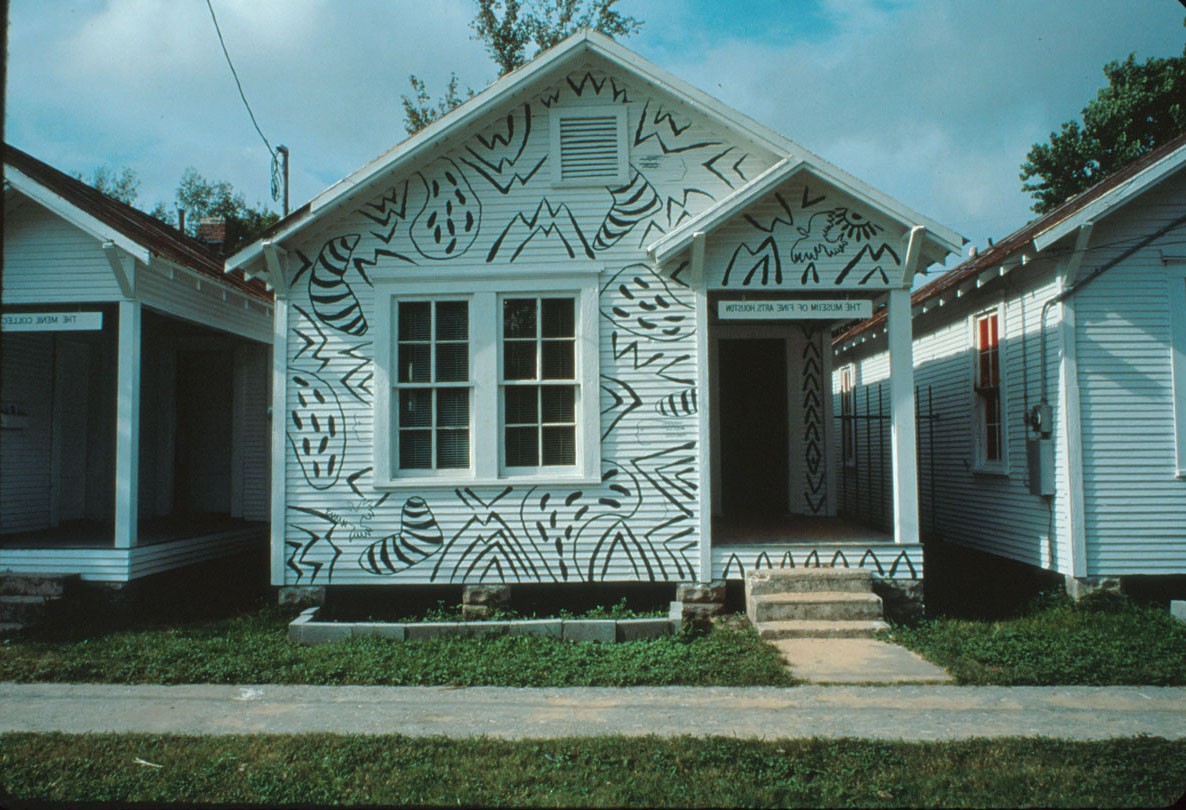 Project Row Houses
Project Row Houses 1997 Rudy Bruner Award for Urban Excellence - Silver Medal
Project Row Houses transformed 22 abandoned, historic shotgun-style houses in Houston into art galleries, subsidized housing, and community support programs. The project preserves the landmark buildings while revitalizing the city’s Third Ward community and celebrating the cultural heritage of one of Houston’s oldest African-American neighborhoods. Founded by artists and community activists, the project sees art as a catalyst for neighborhood revitalization, youth education, and community engagement. The complex includes eight houses for art installations, seven affordable housing units for single mothers, a center for performances, a day care center and after-school program, empowerment programs, and a community garden.
Project Row Houses united members of the community who joined together to design, organize, and acquire funding for the multi-layered project. It offers a national model and can serve as an example for how other inner-city locations can combine the use of local historic structures, art produced by the local community, and social assistance programs to address community needs.
-
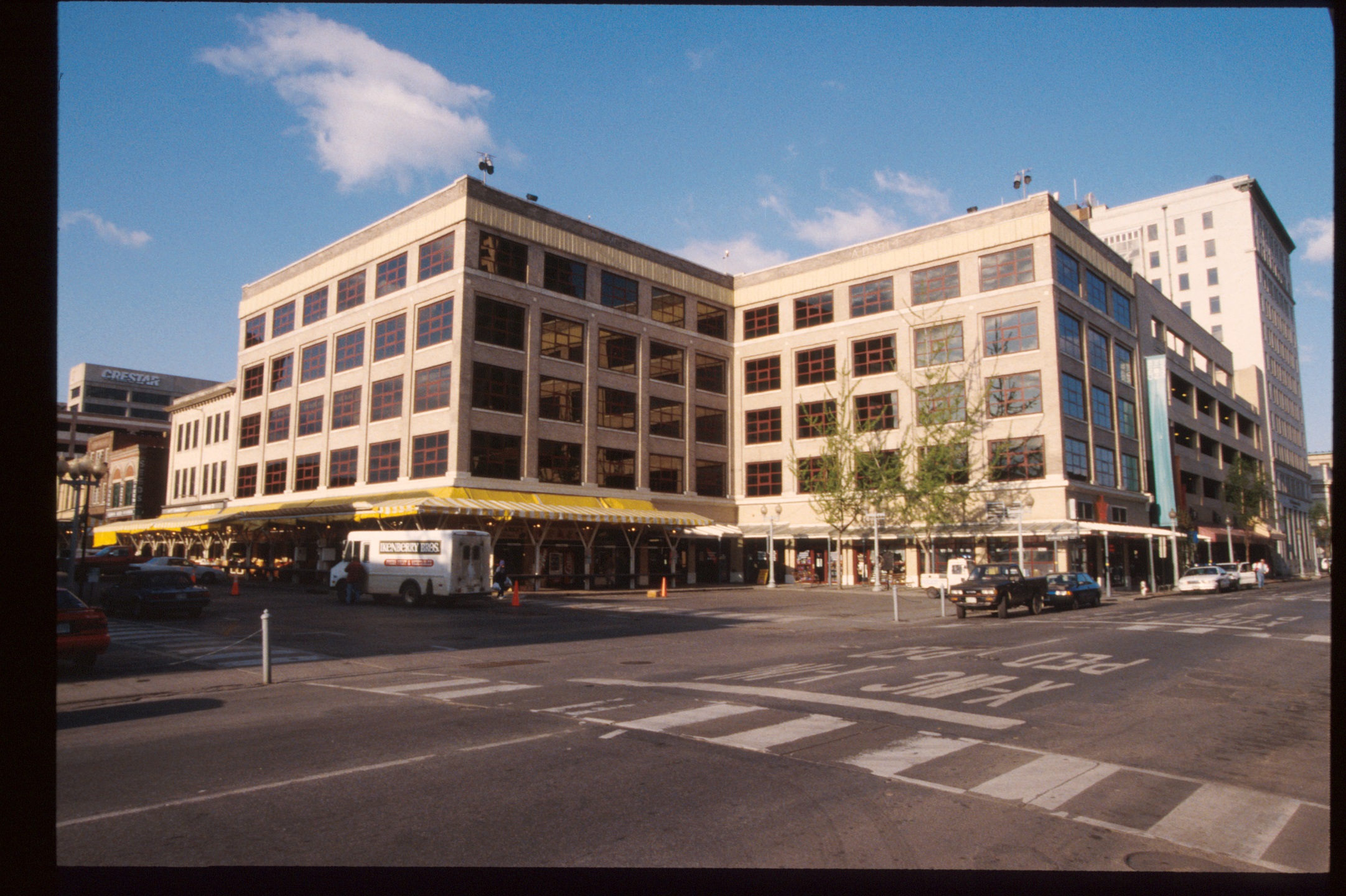 Center in the Square
Center in the Square 1997 Rudy Bruner Award for Urban Excellence - Silver Medal
Center in the Square repurposed a 1914 warehouse in Roanoke, Virginia’s historic farmers market to house and support the local arts community. The restored warehouse is home to the West Virginia Foundation for the Arts and Sciences and houses the Arts Museum of Western Virginia, the Arts Council of the Blue Ridge, Mill Mountain Theatre, Roanoke Valley History Museum, and the Science Museum of Western Virginia. By bringing together these cultural entities in a rent-free space and encouraging community input, Center in the Square has created a new cultural and educational destination in Roanoke and spurred revitalization downtown.
A patron of the arts, Center in the Square provides housing for arts and science organizations free of charge and offers marketing and other support services to tenants. By centralizing arts and science programs, the project gives residents, tourists, and surrounding schools easy access to invaluable cultural and educational resources.
-
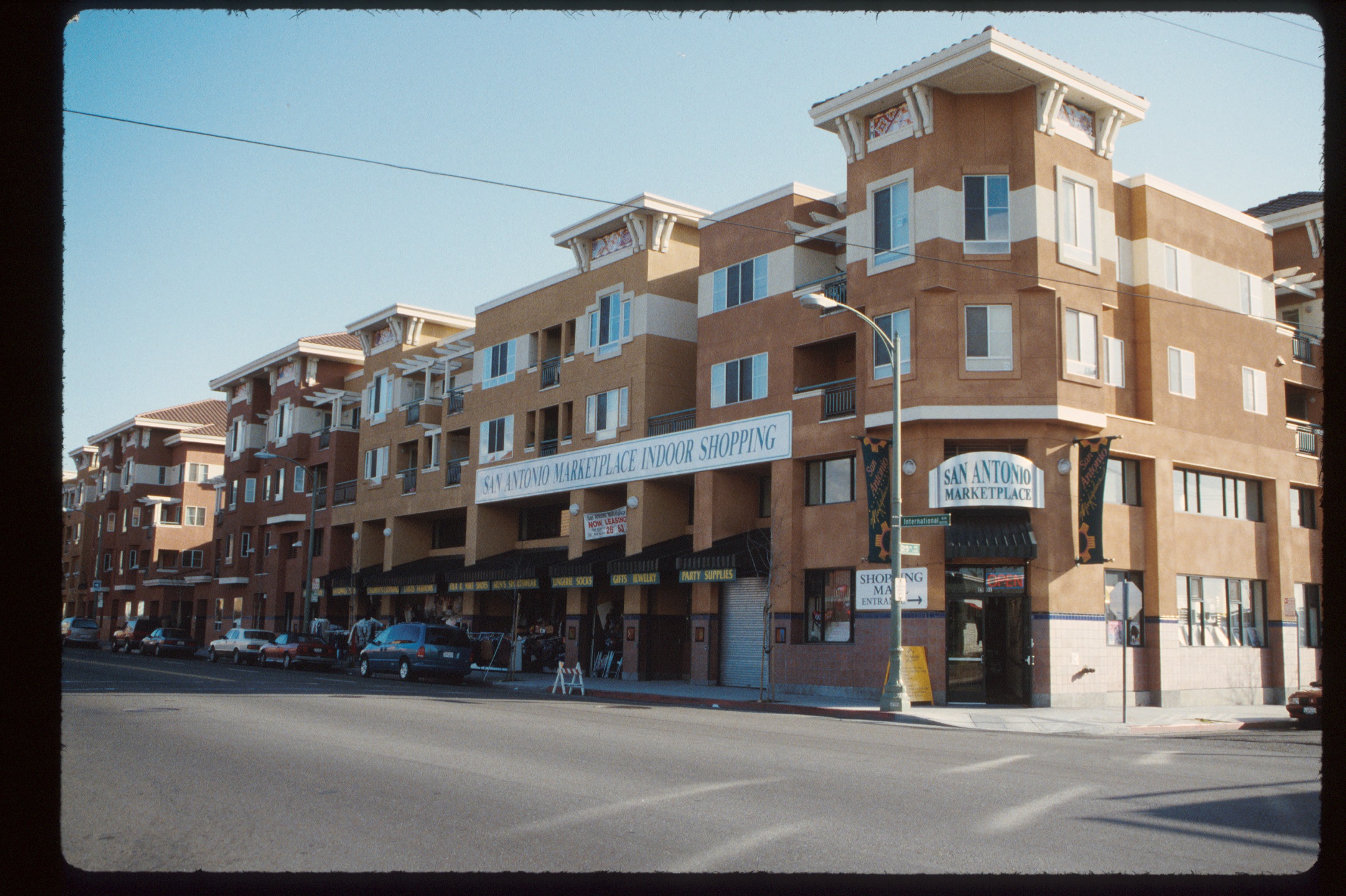 Hismen Hin-nu Terrace
Hismen Hin-nu Terrace 1997 Rudy Bruner Award for Urban Excellence - Silver Medal
Hismen Hin-Nu (Sun Gate Terrace) is a mixed-use development in Oakland, California, with 92 units of low-income housing and 14,000 square feet of retail space. The project turned an abandoned supermarket site known as a haven for drug dealers into a safe, vibrant mixed-use space. Local contractors were used throughout the process, and the resulting complex has become a local landmark, helping to create a sense of place in a once-derelict neighborhood.
The project celebrates the cultural and ethnic diversity of the area with multi-cultural art motifs throughout the residential and retail development. The design is based upon historic California architectural motifs, and the varying unit configurations help accommodate the diverse heritage of its residents. Community members were involved in multiple workshops throughout the design process. The retail area includes a market hall with both indoor and outdoor market space to encourage engagement with the community. Hismen Hin-nu is an exemplary small-scale community development project that emphasizes a participatory planning process and a model for racial and ethnic cooperation.
-
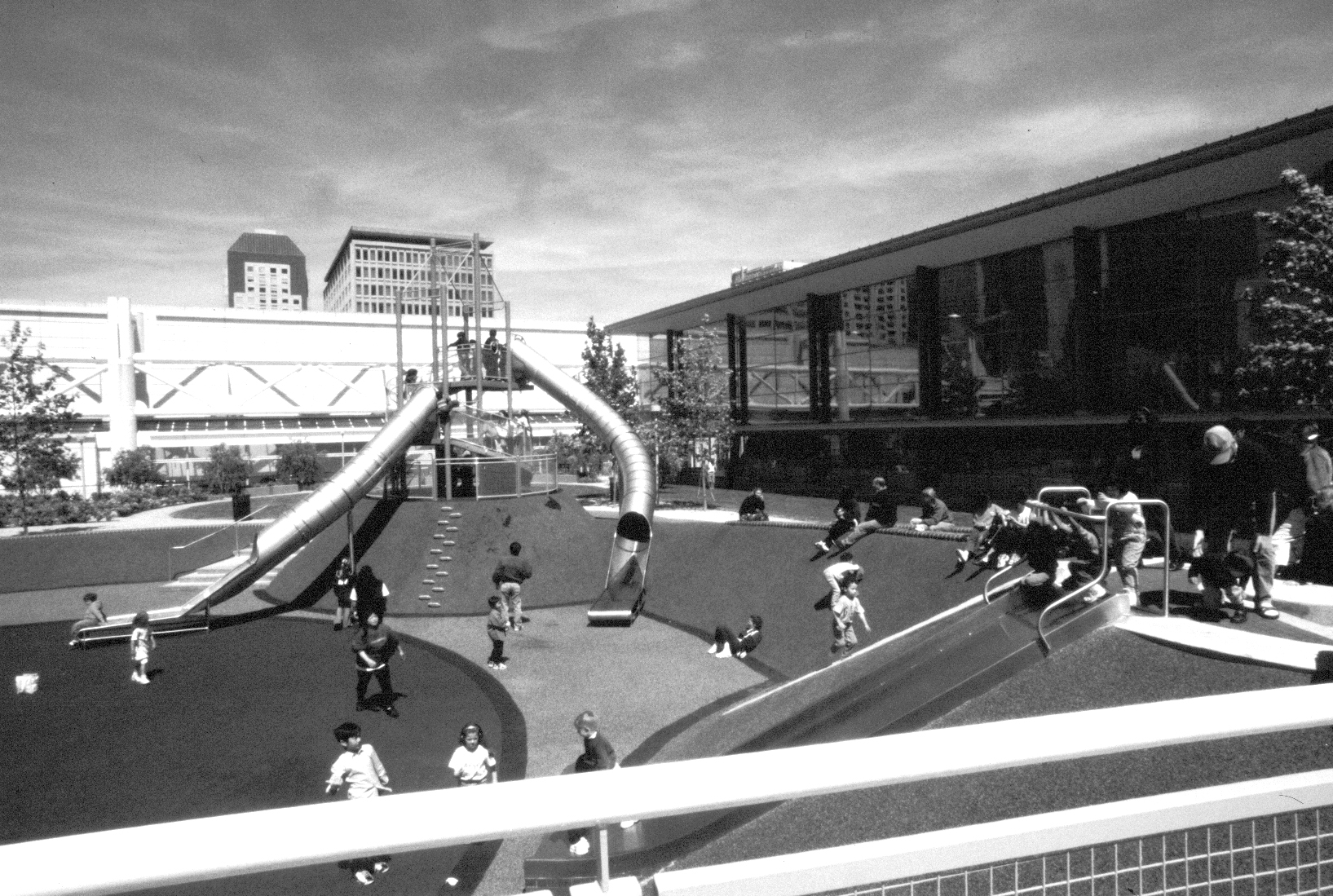 Yerba Buena Gardens
Yerba Buena Gardens 1999 Rudy Bruner Award for Urban Excellence - Gold Medal
Yerba Buena Gardens is the redevelopment of 87 run-down acres in San Francisco’s South of Market district into a vibrant cultural community and downtown destination. Considered an “oasis” in the city, the project focuses on three areas: arts and urban amenities, economic development, and community development and social justice. The result is cultural community with dozens of museums and galleries, a 10-acre complex of children’s facilities, and nearly six acres of public gardens in a network of open space in an area once slated for demolition. Low-income and market-rate rental and residential condominiums, several high-rise office buildings, hotels, and a convention center have spurred economic development and neighborhood stability and help support a thriving tourism industry.
The design of Yerba Buena Gardens reflects the priorities of neighborhood residents with public green space, dozens of community amenities, and emphasis on culture and diversity. The work was made possible by a series of public-private partnerships and a strong coalition of self-governing stakeholder organizations that manage Yerba Buena Gardens.
-
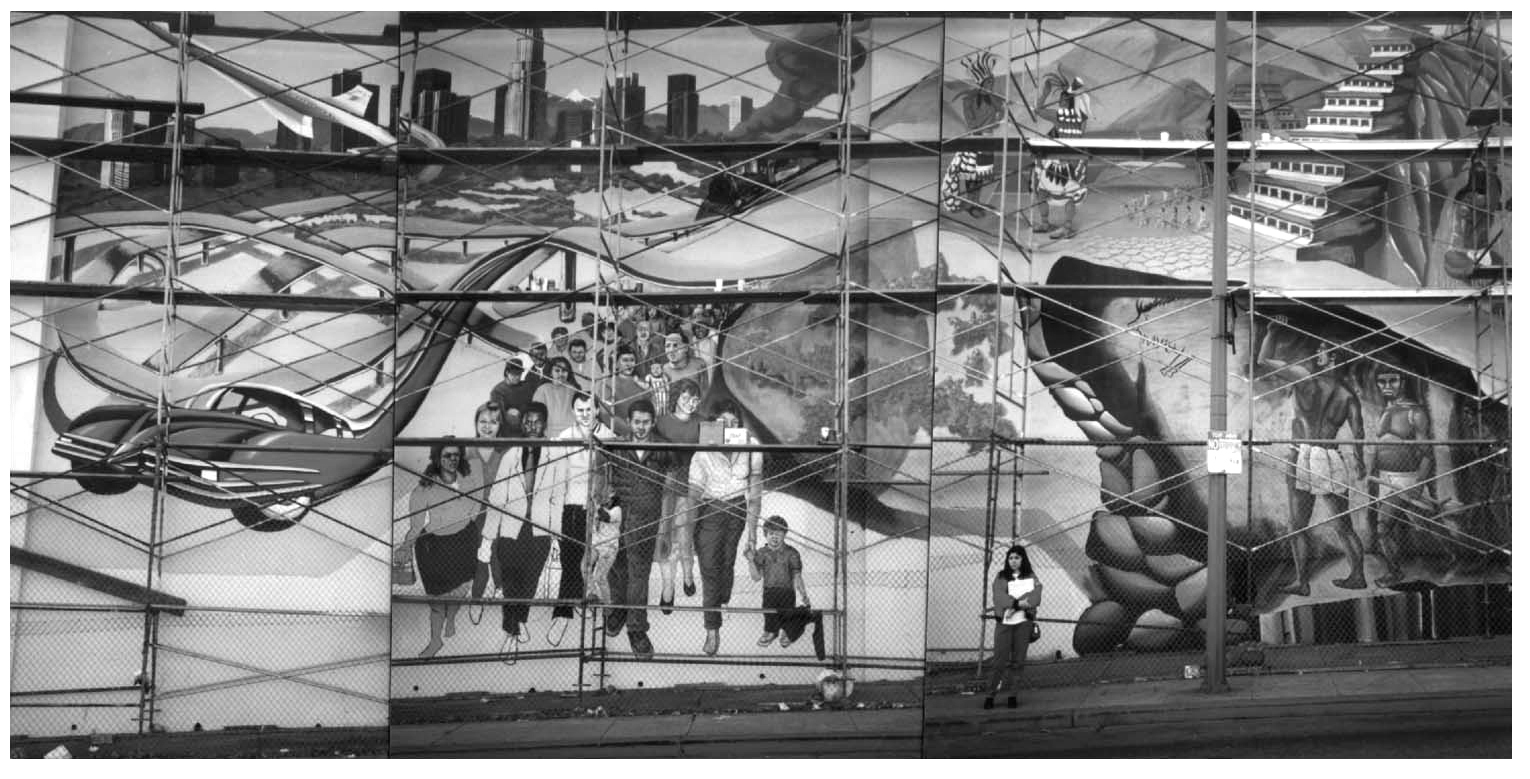 ARTScorpsLA
ARTScorpsLA 1999 Rudy Bruner Award for Urban Excellence - Silver Medal
ARTScorpsLA (ACLA), a community-based program in Los Angeles, fosters creativity and community by turning abandoned lots into art parks and gathering places. Established in 1992 as a nonprofit associated with the University of Southern California, ACLA was a response to civil unrest in the area. Its mission is to revitalize local communities and empower residents by facilitating innovative uses of land, developing creativity, and fostering community involvement and pride.
ACLA’s artistic, sculptural, and landscape projects typically involve young adults and require connection, collaboration, and cooperation. A series of art parks designed and built by residents reclaim neglected areas through creative placemaking that celebrates their diverse community. And as part of a city-wide anti-graffiti initiative, ACLA created nearly 28 murals that help beautify and unite the neighborhood. Workshop space and programs create a training ground and educational opportunities for local youth, helping to create long-term impact on the community.
-
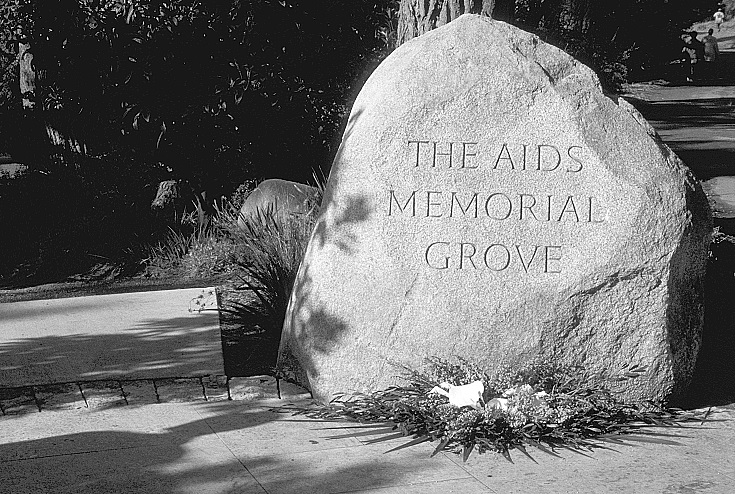 National AIDS Memorial Grove
National AIDS Memorial Grove 1999 Rudy Bruner Award for Urban Excellence - Silver Medal
The National AIDS Memorial Grove in San Francisco is a living memorial to the AIDS epidemic offering a safe space for community grieving and communal healing. For nearly two decades, the city was devastated by the AIDS epidemic. The Memorial Grove transformed an abandoned seven-acre site in Golden Gate Park into gardens and open spaces designed to honor those who have died of AIDS, support those who are living with AIDS/HIV, and comfort those who have lost friends and family to the disease.
The Memorial Grove offers an alternative to individual or isolated mourning by providing a safe public space to grieve, reflect, and share the stories of victims and survivors. Volunteer days bring the community together to upgrade and maintain the park, and a permanent endowment has been established to ensure the park’s continued service to the community as a source of hope, healing, and inspiration.
-
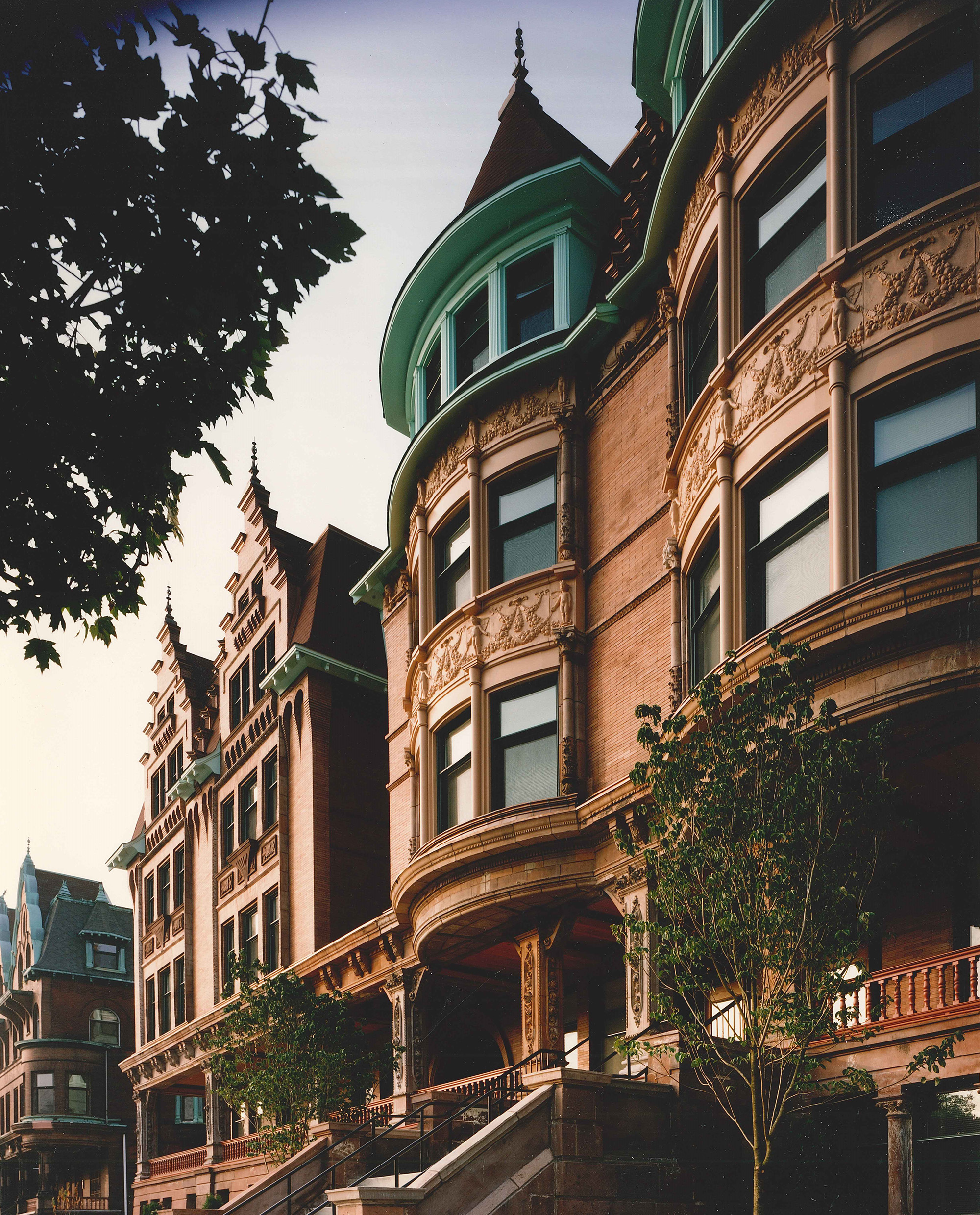 Parkside Preservation
Parkside Preservation 1999 Rudy Bruner Award for Urban Excellence - Silver Medal
The Parkside Historic Preservation project in Philadelphia revitalized Parkside Avenue by repurposing abandoned Victorian mansions to create low-income housing. The restoration brought much-needed affordable housing to a neighborhood struggling with poverty, abandonment, and depopulation. Spearheaded by the nonprofit Parkside Historic Preservation Corporation, the project preserves the elegant architecture of 16 late nineteenth-century mansions to provide 82 high-quality units that combat the social stigma of low-income housing.
The Parkside project also includes programs to support conservation, economic development, and social justice, including a commitment to retain original neighborhood residents and to invite community participation as much as possible. In its effort to truly serve the population, Parkside welcomes all residents in need, including those with HIV/AIDS, the mentally ill, and the physically disabled.
-
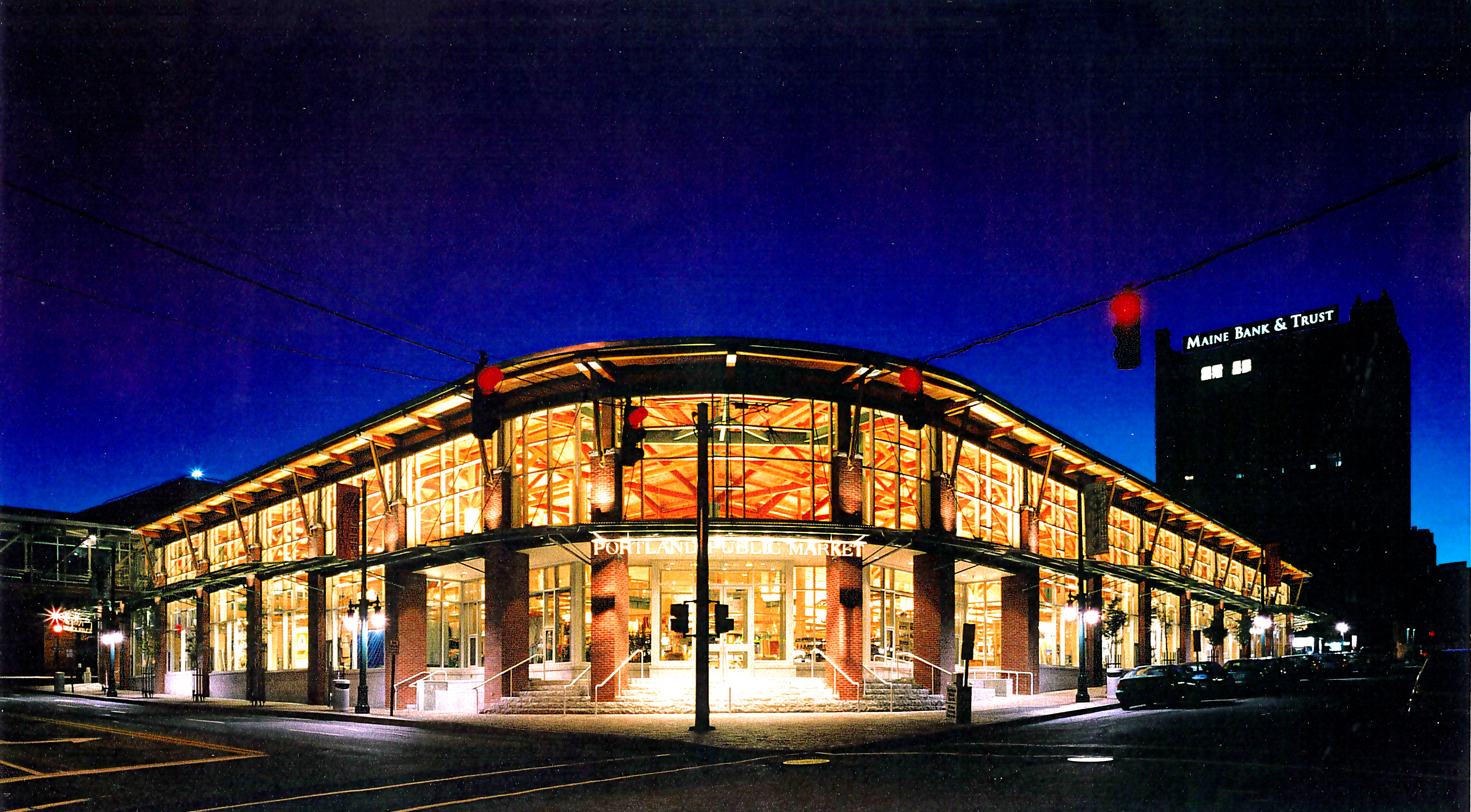 Portland Public Market
Portland Public Market 1999 Rudy Bruner Award for Urban Excellence - Silver Medal
The indoor Portland Public Market in Portland, Maine, featured local products and produce to support small family farms and strengthen the local economy. With room for 28 permanent vendors and eight smaller day tables, the market was built to function year-round and provide a central space for local food producers.
Although it closed in 2006, the market had ambitious goals for revitalizing a marginalized neighborhood and offered a new model for philanthropic intervention in downtown development.
Constructed on the site of an old parking lot on space donated by local philanthropist Elizabeth Noyce, the Portland Public Market was built with local timber and glass and hired only local contractors. It was designed not only to provide a venue for small farmers and independent food producers but also to create an inviting public gathering space that celebrated the local food system. Educational programs such as cooking classes for adults and children supported the goal of encouraging residents to eat fresh and buy locally, and a collaboration with a neighboring soup kitchen resulted in a successful retail soup shop and job training program. The market also became a significant tourist attraction and helped increase traffic at the nearby outdoor market.
-
 Village of Arts and Humanities
Village of Arts and Humanities 2001 Rudy Bruner Award for Urban Excellence - Gold Medal
The Village of Arts and Humanities uses innovative arts-inspired programs to create place, build self-esteem, and foster community in north Philadelphia. In a neighborhood facing many challenges, the project has created a series of “living sculpture” art parks, restored several buildings to create community space, and engaged neighborhood children in building a community park. The village offers arts education and vocational training for youth and adults as well as other programs that serve the over 10,000 primarily low-income African-American residents.
A private, nonprofit community-based organization, the Village of Arts and Humanities began in 1986 as a summer project for local youth. It has since grown into a major provider of arts-inspired programs that focus on beautifying physical spaces to create shifts in the way residents view and value their neighborhood and themselves. A tree farm teaches important environmental lessons, and a theater gives participants the opportunity to share their stories and heal through self-expression. It remains a highly democratic grassroots organization, emphasizing empowerment and possibility in all of its endeavors.
-
 Swan's Marketplace
Swan's Marketplace 2001 Rudy Bruner Award for Urban Excellence - Silver Medal
Swan’s Marketplace in Oakland, California, is an adaptive reuse project incorporating and commercial and arts space in a historic market complex. The renovation restored eight buildings on a shared block in Old Oakland, relocated the vendors of the landmark Housewives Fresh Food Market, and added office space and several retail and restaurant tenants. Twenty market-rate condominiums and 18 affordable housing units were created, and a Museum of Children’s Art adds to the diverse mix of available activities and programs. A shared courtyard and community garden physically connect the project components and create a sense of community that serves the project’s mission to revitalize the neighborhood.
Swan’s Market was made possible by a successful public-private partnership. It succeeded in eliminating blight in the neighborhood while preserving its historic character and attracting middle- and upper-income residents without displacing existing residents and businesses. New businesses have taken root, further boosting the area’s economic vitality and stability.
-
 South Platte River Greenway
South Platte River Greenway 2001 Rudy Bruner Award for Urban Excellence - Silver Medal
The South Platte River Greenway in Denver is 67 miles of recreational greenway, restored river and wildlife habitat, and riverfront development. Before the establishment of the Platte River Development Committee in 1974, the river was seriously polluted and unfit for recreational use. The project fully reclaimed the river and its banks and opened them to recreational and mixed-use development, including community parks, continuous biking and hiking paths, and boating as well as residential, commercial, and entertainment venues such as sport arenas, museums, an amusement park, and a mega sporting goods store. Development is balanced with an abundance of open space and preserved wildlife habitat.
A series of 17 interconnected urban parks connect the city of Denver to the greenway, and educational programs promote stewardship and environmental awareness. A historic trolley runs along portions of the greenway and connects with an urban light rail system for easy access to the area.
-
 New Jersey Performing Arts Center
New Jersey Performing Arts Center 2001 Rudy Bruner Award for Urban Excellence - Silver Medal
The New Jersey Performing Arts Center (NJPAC) presents world-class performers, promotes local artists, and provides arts education and community space in Newark. An arts complex with a social conscience, NJPAC includes two performances venues, rehearsal spaces, social spaces, special events rental space, and the Lucent Technology Center for Arts Education, which includes classrooms, practice rooms, and performance spaces for students. An outdoor plaza connects the center to the street, and a 1,700-space parking garage and nearby mass transit stations provide easy access to the center.
Open since 1997, NJPAC has been an important engine of cultural and economic renewal in America’s third oldest city. It has helped improve the reputation and image of Newark and contributed to a new sense of community pride.
-
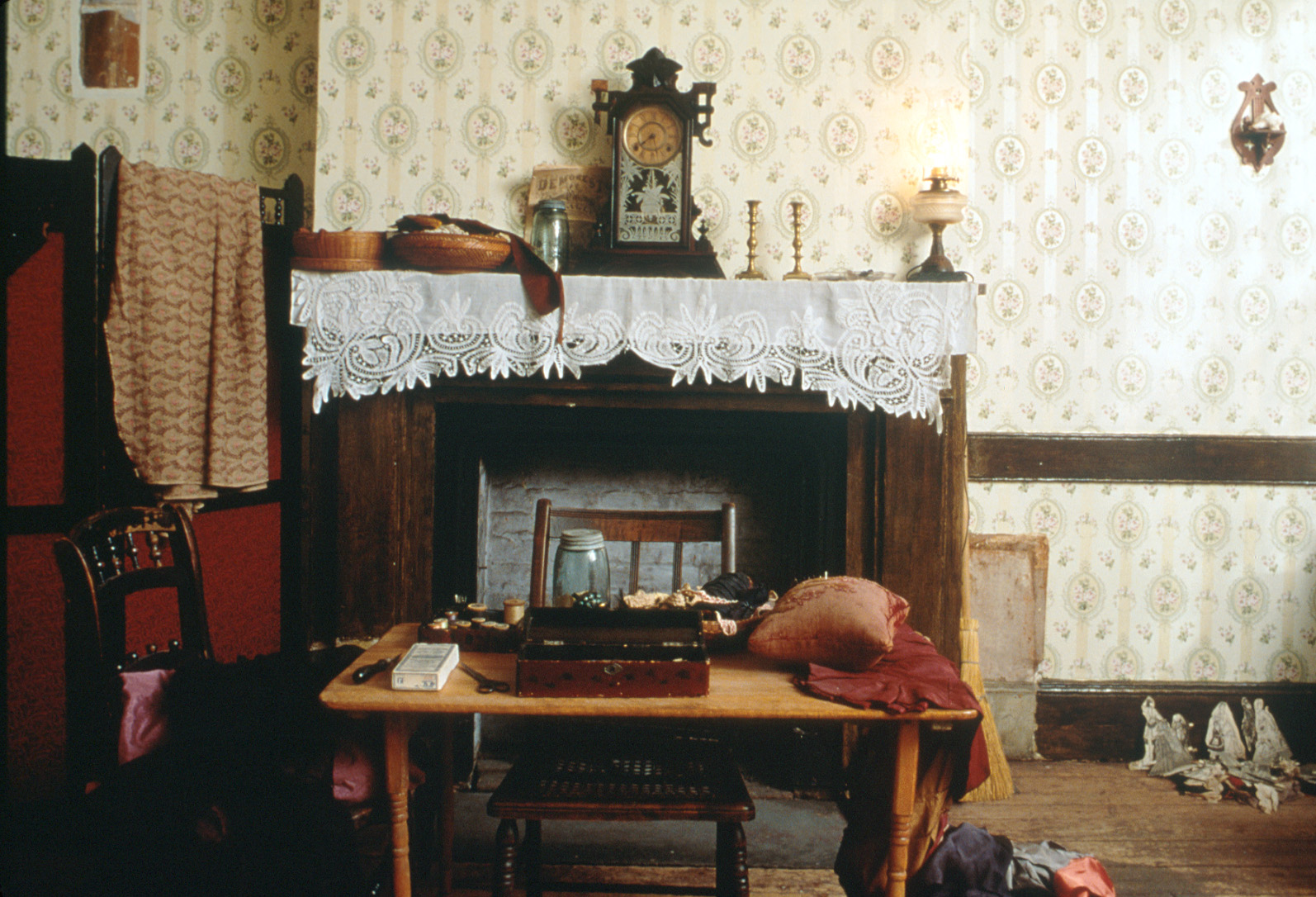 Lower East Side Tenement Museum
Lower East Side Tenement Museum 2001 Rudy Bruner Award for Urban Excellence - Silver Medal
The Lower East Side Tenement Museum in Manhattan is a tenement building preserving the history of immigrant and migrant experiences. The museum presents their stories to promote tolerance, historical perspective, and public dialogue on contemporary issues. The building itself housed nearly 7,000 people from over 20 countries between 1863 and 1935. Its preservation and dedication to educating the public about the immigrant experience challenges the assumptions of what buildings and stories are worth preserving.
The museum offers a variety of programs including interpretive and hands-on experiences, classes and workshops, and community services. Visitors are asked to set aside their assumptions and listen to stories of first-hand experiences of life as an immigrant in a low-income neighborhood on the Lower East Side. The museum fosters understanding and empathy while celebrating the bravery and resilience of the working class residents who have played such a profound role in shaping America’s identity.
-
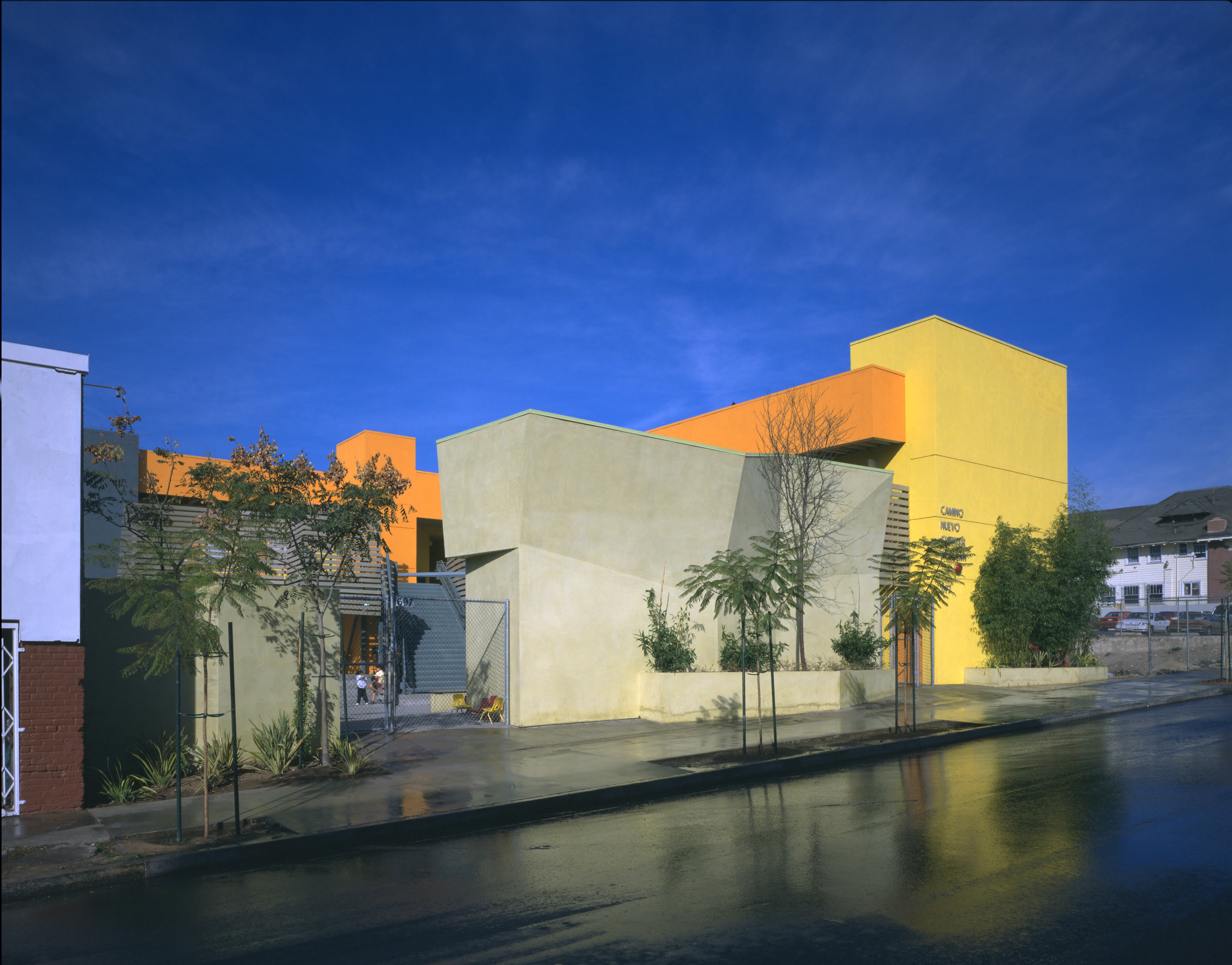 Camino Nuevo Charter Academy
Camino Nuevo Charter Academy 2003 Rudy Bruner Award for Urban Excellence - Gold Medal
Camino Nuevo Charter Academy is a community-based charter elementary school in a repurposed mini-mall in the MacArthur Park section of Los Angeles. It is one of four schools founded by a community developer, Pueblo Nuevo Development Corporation, and is one component of a community revitalization project for the MacArthur Park neighborhood. The school pairs increased parent involvement with assistance and social services to meet the needs of a highly diverse and impoverished inner-city community.
Built by a community development corporation working with the Los Angeles Unified School District, Camino Nuevo exemplifies reuse of a commonplace urban resource, transforming an abandoned mini-mall into a safe and supportive learning environment. A new model of public-private partnership, the project was recognized for its grassroots beginnings; its ambitious and complex agenda including education, job training, and other social services; and its outstanding architectural excellence. The school has enormous potential to provide opportunity and change lives and serves as a stabilizing and energizing force in the district.
-
 Bridgemarket
Bridgemarket 2003 Rudy Bruner Award for Urban Excellence - Silver Medal
Bridgemarket restored a section of a historic Manhattan landmark bridge to create a destination marketplace and plaza that reconnects neighborhoods. The mixed-use venue includes a 900-seat restaurant, a high-end housewares and furniture store, a 24-hour upscale supermarket, and a landscaped public plaza. It is an imaginative reuse of the “rediscovered” landmark space underneath the Queensboro Bridge, and the project itself bridges the former gap between the adjacent neighborhoods of Sutton Place and the Upper East Side with a public pathway.
The project makes the most of the architectural details of the bridge, highlighting the beauty of the vaulted ceilings and arches in the arcade. Residents enjoy shopping at “Manhattan’s most beautiful supermarket,” and what was once a dangerous, neglected space is now a destination. The market has boosted the local economy and promoted growth in the neighborhoods surrounding the bridge.
-
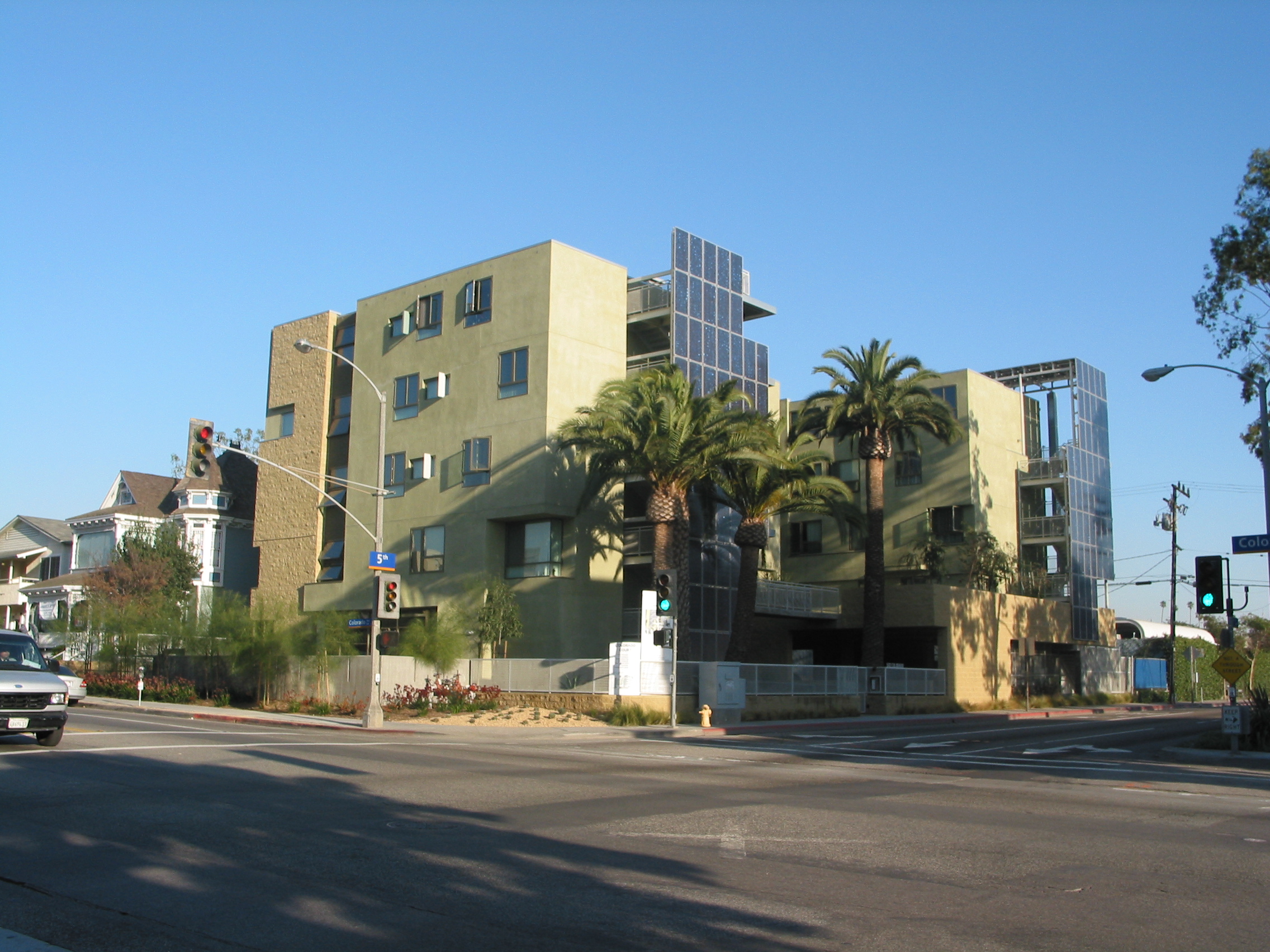 Colorado Court
Colorado Court 2003 Rudy Bruner Award for Urban Excellence - Silver Medal
Colorado Court is a cost-effective affordable housing project in downtown Santa Monica, California, featuring sustainable energy systems and high-quality design. The complex, built on an infill site in a densely populated section of downtown includes 44 well-appointed single-room occupancy (SRO) units. Its design incorporates state-of-the-art sustainable energy systems, including photovoltaic solar panels, a series of passive solar features from siting to ventilation systems, and a micro-turbine that supplements solar panel energy generation.
An unusual collaboration between architect, developer, and municipality, this joint effort is one of the few affordable housing projects in the country to effectively combine sustainable energy systems with affordable housing and quality architectural design. The project achieved LEED Gold certification and 100% energy independence without sacrificing resident amenities, which include a community room, outdoor courtyards, and covered parking.
-
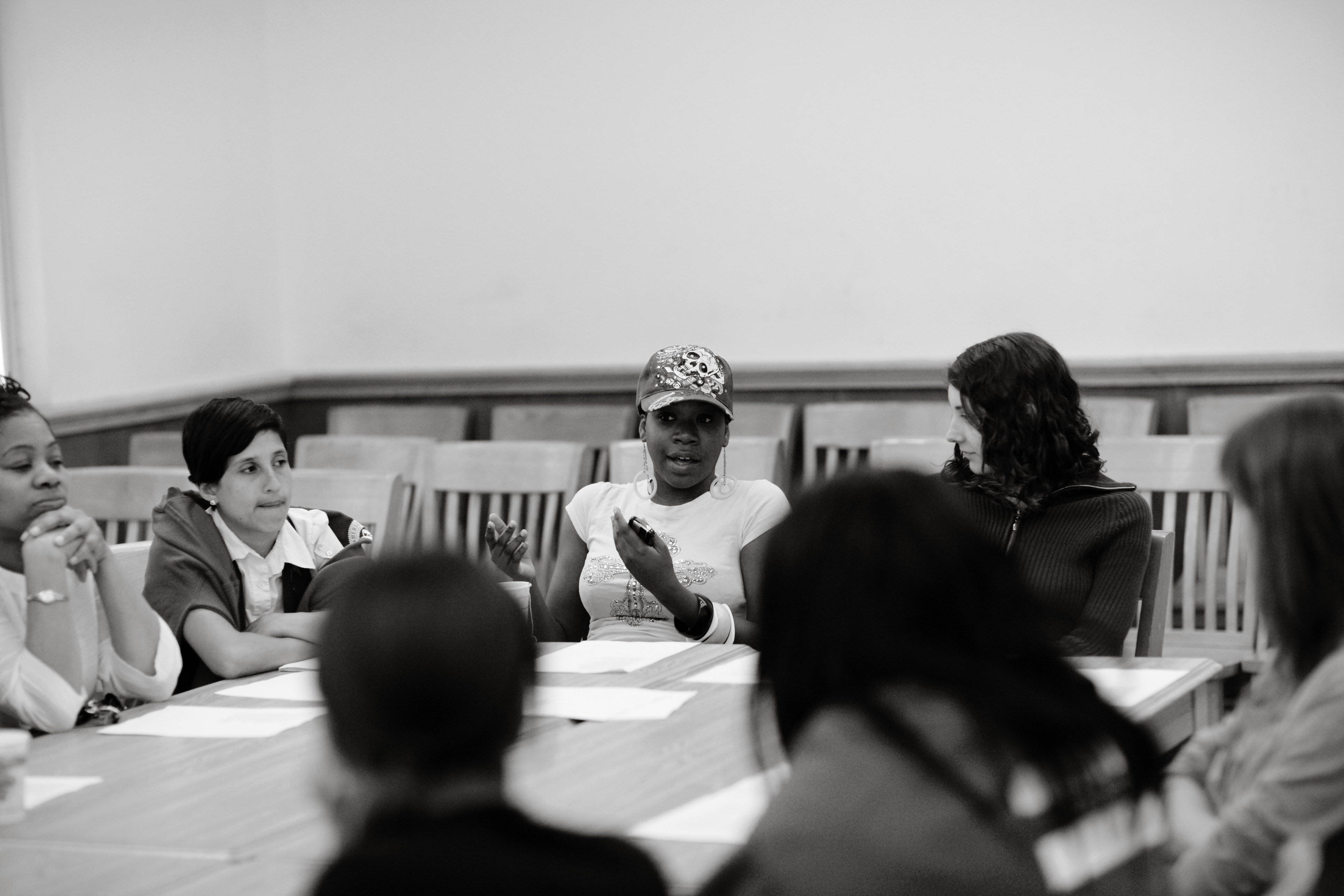 Red Hook Community Justice Center
Red Hook Community Justice Center 2003 Rudy Bruner Award for Urban Excellence - Silver Medal
The Red Hook Community Justice Center in Brooklyn, New York, is a community court that addresses issues through rehabilitation and community restoration. This proactive approach—repeatedly shown to reduce recidivism rates—allows the center to use the court system as a means of intervention to improve the quality of life in a troubled low-income neighborhood. Housed in an abandoned parochial school building with historical significance and character, the center The building’s design reflects this agenda by honoring the historic features of the building, promoting accessibility, and creating a caring and comfortable atmosphere.
The Red Hook Community Justice Center is a replication of the Midtown Community Court model, and its community outreach programs include a safety corps, youth court, and school watches. It represents an innovative approach to community stabilization and revitalization by offering social service programs that engage residents in crime prevention, victim assistance, and community-building activities together with the community justice system.
-
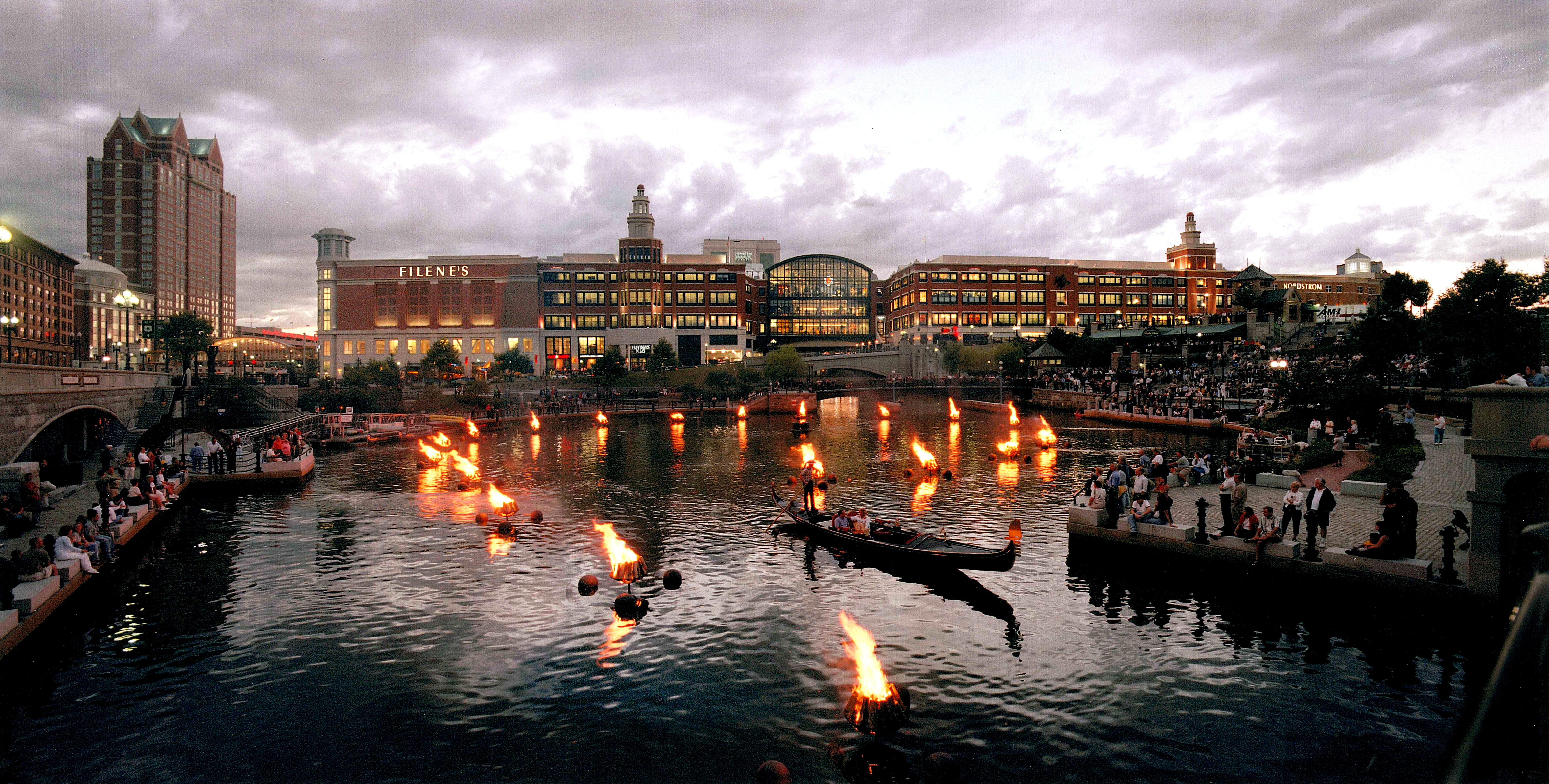 Providence River Relocation
Providence River Relocation 2003 Rudy Bruner Award for Urban Excellence - Silver Medal
The Providence River Relocation project in Rhode Island’s capital city redirected rivers, overhauled transit infrastructure, and created a new riverfront downtown. Thirty years in the making, the relocation of the Woonasquatucket and Moshassuck rivers, construction of a new rail station, highway interchanges, and twelve bridges restored historical links among Providence’s Capital Center, College Hill, and downtown. The project improved traffic flow in and through downtown and added pedestrian-friendly spaces, including 1.5 miles of river walks, along with a new urban park including a restaurant, amphitheater, fountain, and boat landing.
Redirecting the rivers created new, marketable commercial land without demolishing existing buildings in the downtown national register, resulting in over $1 billion in development. The project re-knit adjacent neighborhoods and created public arts and cultural programming that attracts locals and tourists alike to the river’s edge. With an emphasis on small urban spaces within the large-scale redevelopment, the project uses high-quality materials, and the design of the lighting, landscaping, street furniture, tree grates, signage, and historical interpretation panels all welcome the public.
-
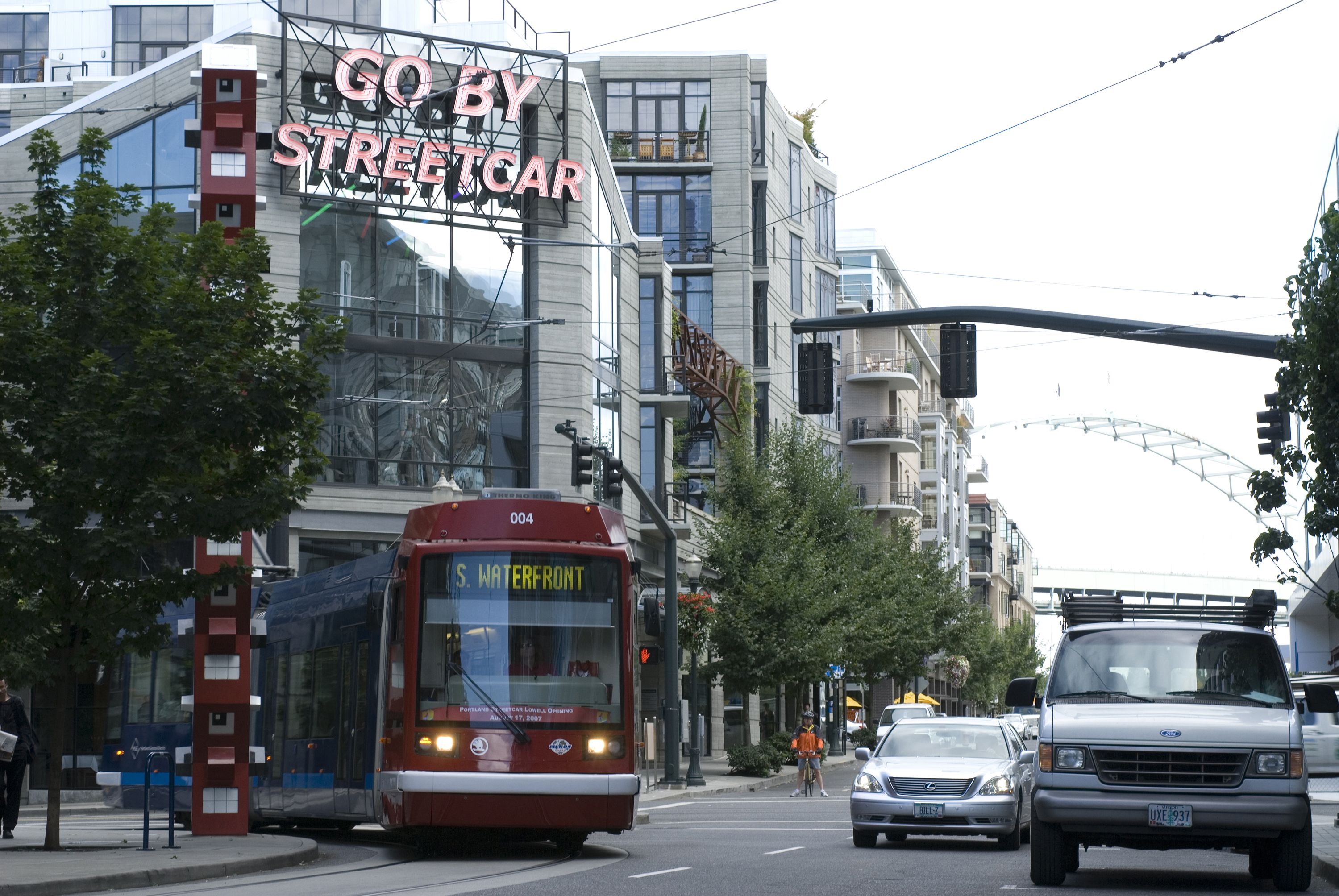 Portland Streetcar Project
Portland Streetcar Project 2005 Rudy Bruner Award for Urban Excellence - Gold Medal
The Portland Streetcar Project reused abandoned railyards to create a state-of-the-art double track streetcar system linking five districts in Portland, Oregon. The streetcar line creates a circulatory loop linking the east and west neighborhoods across the Willamette River and flanks the spine of four parks and mixed-use neighborhoods. The result of a successful public-private partnership, the project serves several high-density areas, helping to reduce auto trips and delivering safe and cost-effective transit services.
Originally started by the city to connect abandoned rail yards and a brownfield site to acres of vacant industrial land at the opposite end of downtown Portland, the Portland Streetcar project now connects a hospital, cultural district, retail center, and the regional transit system. In addition to reclaiming a 70-acre brownfield site, this project spurred $1.4 billion in private and institutional investment for both residential and non-residential uses. Beyond serving as a highly effective mode of transportation, the project is a model for uniting disconnected parts of a city and providing incentive for new development.
-
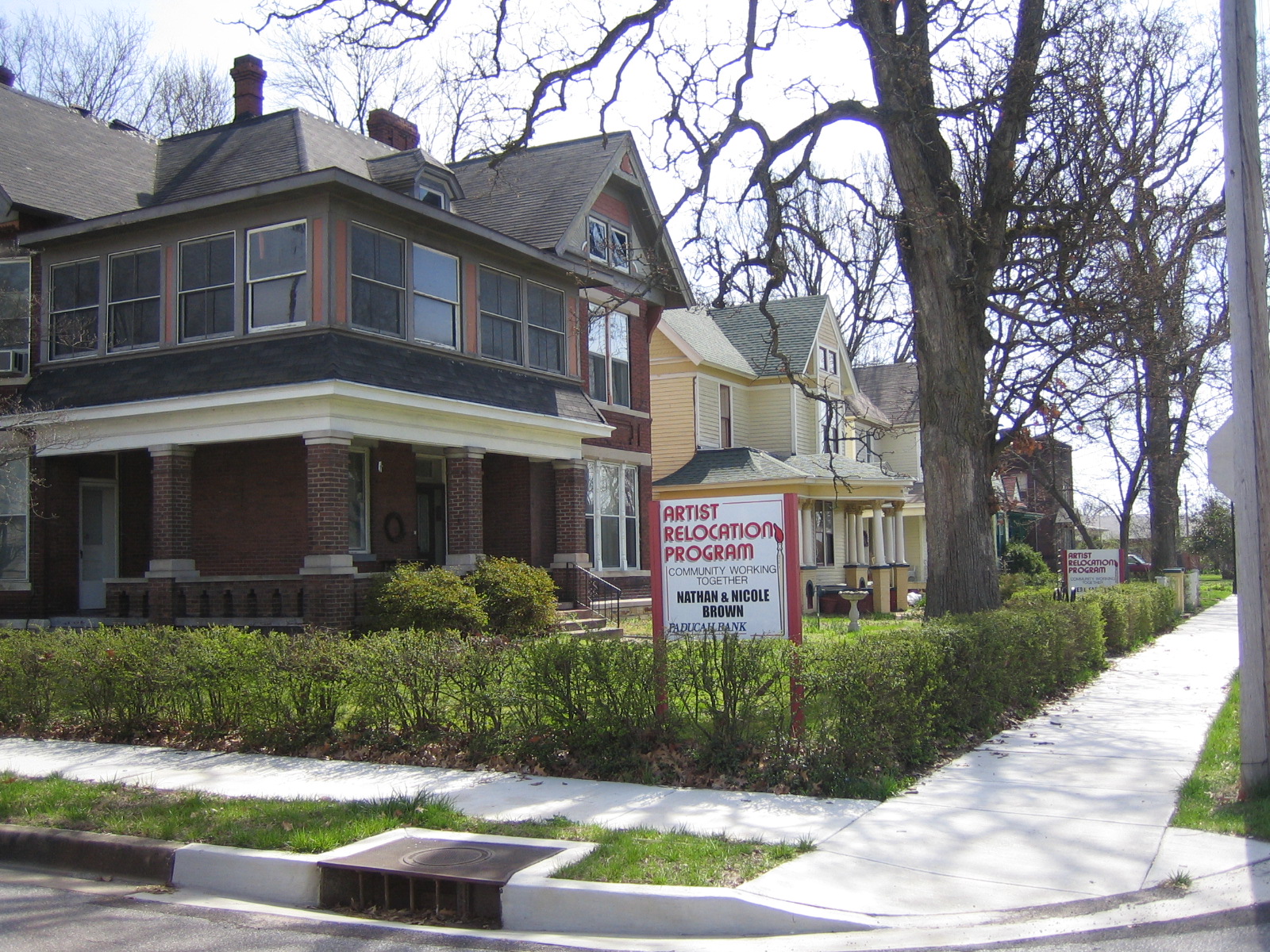 Lower Town Artist Relocation Program
Lower Town Artist Relocation Program 2005 Rudy Bruner Award for Urban Excellence - Silver Medal
The Lower Town Artist Relocation Program rehabilitates historic buildings and encourages artists nationwide to relocate to the Paducah, Kentucky, neighborhood. The program is part of an effort to increase home ownership and property values, and the city offers incentives for the artists to live and work in the city. Historic homes are offered at affordable rates, and artists have access to funding from a local bank for additional restoration as well as rehabilitated retail space for art galleries and storefront real estate. The infill of vacant lots creates additional housing opportunities and helps combat urban sprawl, and the project prioritizes hiring local residents for rehabilitation and construction projects.
The program contributes significantly to the revitalization of a blighted historic neighborhood, strengthens the creative economy of Paducah, and creates a renewed residential community in the downtown. It offers an innovative approach to community revitalization and has become a national model for using the arts for economic development.
-
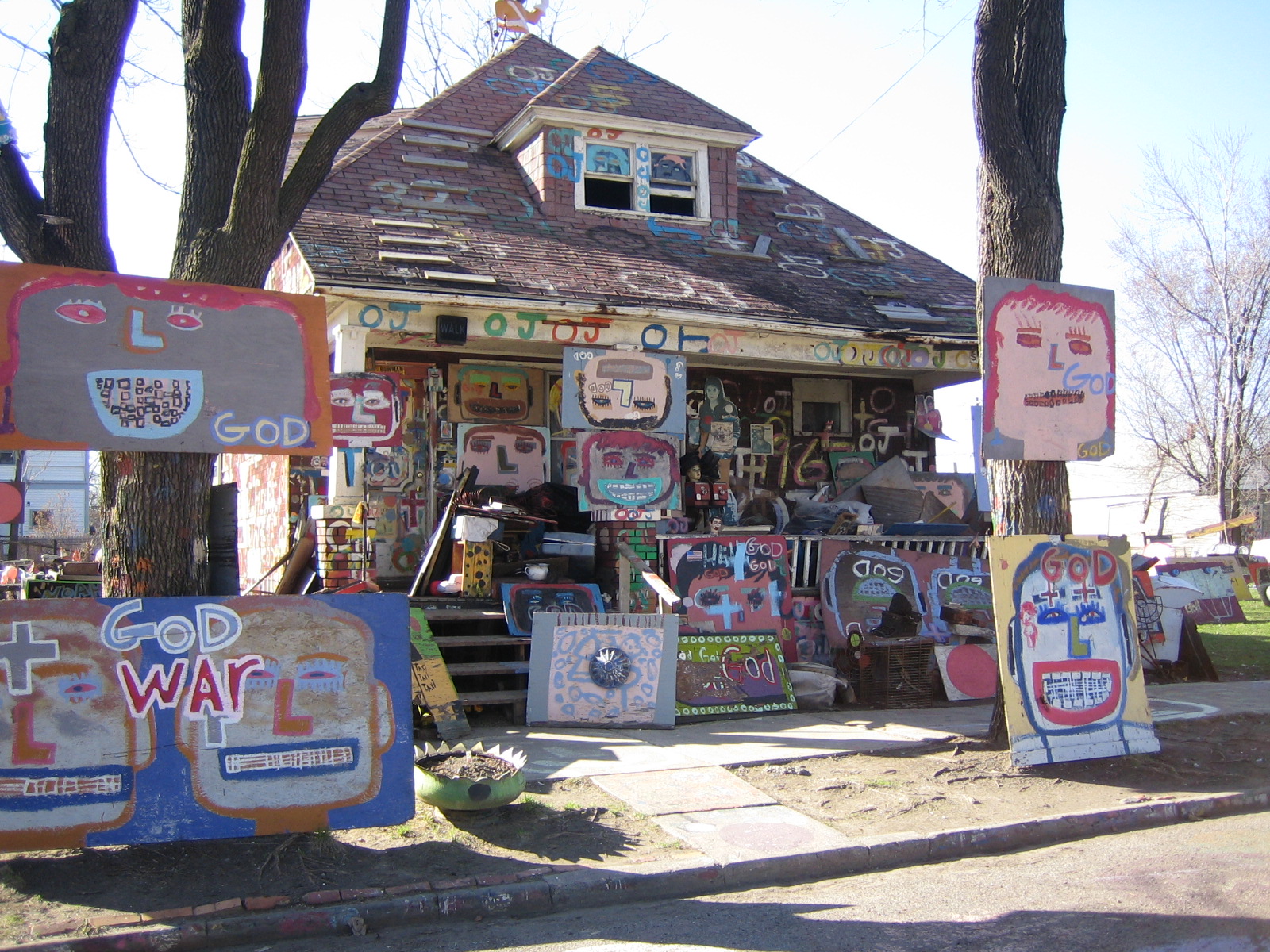 Heidelberg Project
Heidelberg Project 2005 Rudy Bruner Award for Urban Excellence - Silver Medal
Detroit’s Heidelberg Project is a series of open air art installations using art to inspire community change and revitalize an endangered east side neighborhood. The project’s mission is to build bridges between groups of people and to heal individuals and communities through the creative process while beautifying and preserving the community. The project includes a variety of art works, three art education programs, and space for a visiting artist. Despite partial demolition by the city on two occasions, the rebuilt Heidelberg Project is now an award-winning site and the third largest tourist destination in Detroit, attracting a diverse group of visitors from around the world.
Excellent design and aesthetics are top priorities of the project, which aims to save the neighborhood from abandonment by helping renovate the predominately low-income community. The project serves as a symbol of hope in the face of the despair that often accompanies blighted communities. It demonstrates the impact that one inspired artist can have on an entire city and the transformative power of his art, which punctuates the urban landscape with an element of surprise and offers an innovative model for transforming blighted communities.
 Harlem Meer Restoration 1995 Rudy Bruner Award for Urban Excellence - Silver Medal The Harlem Meer project restored 17 acres in the northeast corner of New York City’s Central Park, reconnecting it to surrounding inner-city communities. The Central Park Conservancy and City of New York Department of Parks and Recreation worked together to clean up a polluted 11-acre lake, restore the surrounding landscape, renovate a historic boathouse and playground, and build a new discovery center to revitalize the park and nearby neighborhoods. The project restored a seriously degraded natural habitat and returned a beautiful and important amenity to the area. The Charles A. Dana Discovery Center hosts free community programs and exhibits to educate visitors about the ecosystem and wildlife, and visitors can enjoy a wide range of activities, including fishing, skating, and swimming. The Harlem Meer has helped reintegrate the north and south ends of the park, and the Conservancy worked closely with local neighborhoods throughout the planning process.
Harlem Meer Restoration 1995 Rudy Bruner Award for Urban Excellence - Silver Medal The Harlem Meer project restored 17 acres in the northeast corner of New York City’s Central Park, reconnecting it to surrounding inner-city communities. The Central Park Conservancy and City of New York Department of Parks and Recreation worked together to clean up a polluted 11-acre lake, restore the surrounding landscape, renovate a historic boathouse and playground, and build a new discovery center to revitalize the park and nearby neighborhoods. The project restored a seriously degraded natural habitat and returned a beautiful and important amenity to the area. The Charles A. Dana Discovery Center hosts free community programs and exhibits to educate visitors about the ecosystem and wildlife, and visitors can enjoy a wide range of activities, including fishing, skating, and swimming. The Harlem Meer has helped reintegrate the north and south ends of the park, and the Conservancy worked closely with local neighborhoods throughout the planning process. Lowertown 1995 Rudy Bruner Award for Urban Excellence Lowertown is an urban renewal project that transformed an underused warehouse district in downtown St. Paul, Minnesota, into a vibrant, mixed-use urban village. For over 20 years, the city took a comprehensive approach to the redevelopment of the historic neighborhood, which is now home to thriving art studios, entertainment centers, local businesses, parks, and walk-to-work housing. The project was envisioned not as a short-term fix for a declining neighborhood but as a long-term approach to creating a vital, dynamic, economically viable, and desirable new urban neighborhood. The successful redevelopment is the result of a collaboration between public agencies, private lenders, foundations, neighborhood organizations, artist communities, business associations, and other local organizations. More than 70 projects have been completed, and the gradual approach has allowed for incremental, preservation-oriented rehabilitation; retention of community self-reliance; and maximum leveraging of private investment.
Lowertown 1995 Rudy Bruner Award for Urban Excellence Lowertown is an urban renewal project that transformed an underused warehouse district in downtown St. Paul, Minnesota, into a vibrant, mixed-use urban village. For over 20 years, the city took a comprehensive approach to the redevelopment of the historic neighborhood, which is now home to thriving art studios, entertainment centers, local businesses, parks, and walk-to-work housing. The project was envisioned not as a short-term fix for a declining neighborhood but as a long-term approach to creating a vital, dynamic, economically viable, and desirable new urban neighborhood. The successful redevelopment is the result of a collaboration between public agencies, private lenders, foundations, neighborhood organizations, artist communities, business associations, and other local organizations. More than 70 projects have been completed, and the gradual approach has allowed for incremental, preservation-oriented rehabilitation; retention of community self-reliance; and maximum leveraging of private investment. The Times Square 1997 Rudy Bruner Award for Urban Excellence - Gold Medal The Times Square in New York City transformed a dilapidated midtown hotel into a large-scale supportive housing development for people in need. Between 1991 and 1994, Common Ground Community HDFC, Inc. spearheaded the renovation of the infamous single-room occupancy hotel in Times Square into 652 secure, single-occupancy units with affordable rents for formerly homeless individuals, low-income adults, the elderly and mentally ill, and people with HIV/AIDS. The ground floor offers commercial space for three retail operations that support job training and hiring programs. The project combines excellence in design with an innovative housing model, social services, and job training, and it has helped stabilized a key corner in the ongoing revitalization of the Times Square district. Programming is designed to help tenants foster stability and independence, and the project demonstrates the feasibility of developing high-quality, cost-effective, large-scale affordable housing.
The Times Square 1997 Rudy Bruner Award for Urban Excellence - Gold Medal The Times Square in New York City transformed a dilapidated midtown hotel into a large-scale supportive housing development for people in need. Between 1991 and 1994, Common Ground Community HDFC, Inc. spearheaded the renovation of the infamous single-room occupancy hotel in Times Square into 652 secure, single-occupancy units with affordable rents for formerly homeless individuals, low-income adults, the elderly and mentally ill, and people with HIV/AIDS. The ground floor offers commercial space for three retail operations that support job training and hiring programs. The project combines excellence in design with an innovative housing model, social services, and job training, and it has helped stabilized a key corner in the ongoing revitalization of the Times Square district. Programming is designed to help tenants foster stability and independence, and the project demonstrates the feasibility of developing high-quality, cost-effective, large-scale affordable housing. Cleveland Historic Warehouse District 1997 Rudy Bruner Award for Urban Excellence - Silver Medal The Cleveland Historic Warehouse District is an adaptive reuse project transforming vacant industrial and office buildings into residential and commercial space. The project was a response to the city’s demolition of the neighborhood in the 1960s-1970s, when more than half of the district’s historic structures were torn down and replaced with parking lots. Residents organized the Historic Warehouse District Development Corporation of Cleveland in time to preserve the oldest building in the area. The organization moved on to preserve many more important buildings, adapting them to create mixed-use and market-rate housing to entice the middle class to return to Cleveland. The revitalization of the area includes retail shops, restaurants, jazz clubs, and commercial tenants in the heart of Cleveland next to the financial district. With a critical mass of 1,500 residents, the project balances preservation with new development and proves that they can be combined successfully to revitalize a district.
Cleveland Historic Warehouse District 1997 Rudy Bruner Award for Urban Excellence - Silver Medal The Cleveland Historic Warehouse District is an adaptive reuse project transforming vacant industrial and office buildings into residential and commercial space. The project was a response to the city’s demolition of the neighborhood in the 1960s-1970s, when more than half of the district’s historic structures were torn down and replaced with parking lots. Residents organized the Historic Warehouse District Development Corporation of Cleveland in time to preserve the oldest building in the area. The organization moved on to preserve many more important buildings, adapting them to create mixed-use and market-rate housing to entice the middle class to return to Cleveland. The revitalization of the area includes retail shops, restaurants, jazz clubs, and commercial tenants in the heart of Cleveland next to the financial district. With a critical mass of 1,500 residents, the project balances preservation with new development and proves that they can be combined successfully to revitalize a district. Project Row Houses 1997 Rudy Bruner Award for Urban Excellence - Silver Medal Project Row Houses transformed 22 abandoned, historic shotgun-style houses in Houston into art galleries, subsidized housing, and community support programs. The project preserves the landmark buildings while revitalizing the city’s Third Ward community and celebrating the cultural heritage of one of Houston’s oldest African-American neighborhoods. Founded by artists and community activists, the project sees art as a catalyst for neighborhood revitalization, youth education, and community engagement. The complex includes eight houses for art installations, seven affordable housing units for single mothers, a center for performances, a day care center and after-school program, empowerment programs, and a community garden. Project Row Houses united members of the community who joined together to design, organize, and acquire funding for the multi-layered project. It offers a national model and can serve as an example for how other inner-city locations can combine the use of local historic structures, art produced by the local community, and social assistance programs to address community needs.
Project Row Houses 1997 Rudy Bruner Award for Urban Excellence - Silver Medal Project Row Houses transformed 22 abandoned, historic shotgun-style houses in Houston into art galleries, subsidized housing, and community support programs. The project preserves the landmark buildings while revitalizing the city’s Third Ward community and celebrating the cultural heritage of one of Houston’s oldest African-American neighborhoods. Founded by artists and community activists, the project sees art as a catalyst for neighborhood revitalization, youth education, and community engagement. The complex includes eight houses for art installations, seven affordable housing units for single mothers, a center for performances, a day care center and after-school program, empowerment programs, and a community garden. Project Row Houses united members of the community who joined together to design, organize, and acquire funding for the multi-layered project. It offers a national model and can serve as an example for how other inner-city locations can combine the use of local historic structures, art produced by the local community, and social assistance programs to address community needs. Center in the Square 1997 Rudy Bruner Award for Urban Excellence - Silver Medal Center in the Square repurposed a 1914 warehouse in Roanoke, Virginia’s historic farmers market to house and support the local arts community. The restored warehouse is home to the West Virginia Foundation for the Arts and Sciences and houses the Arts Museum of Western Virginia, the Arts Council of the Blue Ridge, Mill Mountain Theatre, Roanoke Valley History Museum, and the Science Museum of Western Virginia. By bringing together these cultural entities in a rent-free space and encouraging community input, Center in the Square has created a new cultural and educational destination in Roanoke and spurred revitalization downtown. A patron of the arts, Center in the Square provides housing for arts and science organizations free of charge and offers marketing and other support services to tenants. By centralizing arts and science programs, the project gives residents, tourists, and surrounding schools easy access to invaluable cultural and educational resources.
Center in the Square 1997 Rudy Bruner Award for Urban Excellence - Silver Medal Center in the Square repurposed a 1914 warehouse in Roanoke, Virginia’s historic farmers market to house and support the local arts community. The restored warehouse is home to the West Virginia Foundation for the Arts and Sciences and houses the Arts Museum of Western Virginia, the Arts Council of the Blue Ridge, Mill Mountain Theatre, Roanoke Valley History Museum, and the Science Museum of Western Virginia. By bringing together these cultural entities in a rent-free space and encouraging community input, Center in the Square has created a new cultural and educational destination in Roanoke and spurred revitalization downtown. A patron of the arts, Center in the Square provides housing for arts and science organizations free of charge and offers marketing and other support services to tenants. By centralizing arts and science programs, the project gives residents, tourists, and surrounding schools easy access to invaluable cultural and educational resources. Hismen Hin-nu Terrace 1997 Rudy Bruner Award for Urban Excellence - Silver Medal Hismen Hin-Nu (Sun Gate Terrace) is a mixed-use development in Oakland, California, with 92 units of low-income housing and 14,000 square feet of retail space. The project turned an abandoned supermarket site known as a haven for drug dealers into a safe, vibrant mixed-use space. Local contractors were used throughout the process, and the resulting complex has become a local landmark, helping to create a sense of place in a once-derelict neighborhood. The project celebrates the cultural and ethnic diversity of the area with multi-cultural art motifs throughout the residential and retail development. The design is based upon historic California architectural motifs, and the varying unit configurations help accommodate the diverse heritage of its residents. Community members were involved in multiple workshops throughout the design process. The retail area includes a market hall with both indoor and outdoor market space to encourage engagement with the community. Hismen Hin-nu is an exemplary small-scale community development project that emphasizes a participatory planning process and a model for racial and ethnic cooperation.
Hismen Hin-nu Terrace 1997 Rudy Bruner Award for Urban Excellence - Silver Medal Hismen Hin-Nu (Sun Gate Terrace) is a mixed-use development in Oakland, California, with 92 units of low-income housing and 14,000 square feet of retail space. The project turned an abandoned supermarket site known as a haven for drug dealers into a safe, vibrant mixed-use space. Local contractors were used throughout the process, and the resulting complex has become a local landmark, helping to create a sense of place in a once-derelict neighborhood. The project celebrates the cultural and ethnic diversity of the area with multi-cultural art motifs throughout the residential and retail development. The design is based upon historic California architectural motifs, and the varying unit configurations help accommodate the diverse heritage of its residents. Community members were involved in multiple workshops throughout the design process. The retail area includes a market hall with both indoor and outdoor market space to encourage engagement with the community. Hismen Hin-nu is an exemplary small-scale community development project that emphasizes a participatory planning process and a model for racial and ethnic cooperation. Yerba Buena Gardens 1999 Rudy Bruner Award for Urban Excellence - Gold Medal Yerba Buena Gardens is the redevelopment of 87 run-down acres in San Francisco’s South of Market district into a vibrant cultural community and downtown destination. Considered an “oasis” in the city, the project focuses on three areas: arts and urban amenities, economic development, and community development and social justice. The result is cultural community with dozens of museums and galleries, a 10-acre complex of children’s facilities, and nearly six acres of public gardens in a network of open space in an area once slated for demolition. Low-income and market-rate rental and residential condominiums, several high-rise office buildings, hotels, and a convention center have spurred economic development and neighborhood stability and help support a thriving tourism industry. The design of Yerba Buena Gardens reflects the priorities of neighborhood residents with public green space, dozens of community amenities, and emphasis on culture and diversity. The work was made possible by a series of public-private partnerships and a strong coalition of self-governing stakeholder organizations that manage Yerba Buena Gardens.
Yerba Buena Gardens 1999 Rudy Bruner Award for Urban Excellence - Gold Medal Yerba Buena Gardens is the redevelopment of 87 run-down acres in San Francisco’s South of Market district into a vibrant cultural community and downtown destination. Considered an “oasis” in the city, the project focuses on three areas: arts and urban amenities, economic development, and community development and social justice. The result is cultural community with dozens of museums and galleries, a 10-acre complex of children’s facilities, and nearly six acres of public gardens in a network of open space in an area once slated for demolition. Low-income and market-rate rental and residential condominiums, several high-rise office buildings, hotels, and a convention center have spurred economic development and neighborhood stability and help support a thriving tourism industry. The design of Yerba Buena Gardens reflects the priorities of neighborhood residents with public green space, dozens of community amenities, and emphasis on culture and diversity. The work was made possible by a series of public-private partnerships and a strong coalition of self-governing stakeholder organizations that manage Yerba Buena Gardens. ARTScorpsLA 1999 Rudy Bruner Award for Urban Excellence - Silver Medal ARTScorpsLA (ACLA), a community-based program in Los Angeles, fosters creativity and community by turning abandoned lots into art parks and gathering places. Established in 1992 as a nonprofit associated with the University of Southern California, ACLA was a response to civil unrest in the area. Its mission is to revitalize local communities and empower residents by facilitating innovative uses of land, developing creativity, and fostering community involvement and pride. ACLA’s artistic, sculptural, and landscape projects typically involve young adults and require connection, collaboration, and cooperation. A series of art parks designed and built by residents reclaim neglected areas through creative placemaking that celebrates their diverse community. And as part of a city-wide anti-graffiti initiative, ACLA created nearly 28 murals that help beautify and unite the neighborhood. Workshop space and programs create a training ground and educational opportunities for local youth, helping to create long-term impact on the community.
ARTScorpsLA 1999 Rudy Bruner Award for Urban Excellence - Silver Medal ARTScorpsLA (ACLA), a community-based program in Los Angeles, fosters creativity and community by turning abandoned lots into art parks and gathering places. Established in 1992 as a nonprofit associated with the University of Southern California, ACLA was a response to civil unrest in the area. Its mission is to revitalize local communities and empower residents by facilitating innovative uses of land, developing creativity, and fostering community involvement and pride. ACLA’s artistic, sculptural, and landscape projects typically involve young adults and require connection, collaboration, and cooperation. A series of art parks designed and built by residents reclaim neglected areas through creative placemaking that celebrates their diverse community. And as part of a city-wide anti-graffiti initiative, ACLA created nearly 28 murals that help beautify and unite the neighborhood. Workshop space and programs create a training ground and educational opportunities for local youth, helping to create long-term impact on the community. National AIDS Memorial Grove 1999 Rudy Bruner Award for Urban Excellence - Silver Medal The National AIDS Memorial Grove in San Francisco is a living memorial to the AIDS epidemic offering a safe space for community grieving and communal healing. For nearly two decades, the city was devastated by the AIDS epidemic. The Memorial Grove transformed an abandoned seven-acre site in Golden Gate Park into gardens and open spaces designed to honor those who have died of AIDS, support those who are living with AIDS/HIV, and comfort those who have lost friends and family to the disease. The Memorial Grove offers an alternative to individual or isolated mourning by providing a safe public space to grieve, reflect, and share the stories of victims and survivors. Volunteer days bring the community together to upgrade and maintain the park, and a permanent endowment has been established to ensure the park’s continued service to the community as a source of hope, healing, and inspiration.
National AIDS Memorial Grove 1999 Rudy Bruner Award for Urban Excellence - Silver Medal The National AIDS Memorial Grove in San Francisco is a living memorial to the AIDS epidemic offering a safe space for community grieving and communal healing. For nearly two decades, the city was devastated by the AIDS epidemic. The Memorial Grove transformed an abandoned seven-acre site in Golden Gate Park into gardens and open spaces designed to honor those who have died of AIDS, support those who are living with AIDS/HIV, and comfort those who have lost friends and family to the disease. The Memorial Grove offers an alternative to individual or isolated mourning by providing a safe public space to grieve, reflect, and share the stories of victims and survivors. Volunteer days bring the community together to upgrade and maintain the park, and a permanent endowment has been established to ensure the park’s continued service to the community as a source of hope, healing, and inspiration. Parkside Preservation 1999 Rudy Bruner Award for Urban Excellence - Silver Medal The Parkside Historic Preservation project in Philadelphia revitalized Parkside Avenue by repurposing abandoned Victorian mansions to create low-income housing. The restoration brought much-needed affordable housing to a neighborhood struggling with poverty, abandonment, and depopulation. Spearheaded by the nonprofit Parkside Historic Preservation Corporation, the project preserves the elegant architecture of 16 late nineteenth-century mansions to provide 82 high-quality units that combat the social stigma of low-income housing. The Parkside project also includes programs to support conservation, economic development, and social justice, including a commitment to retain original neighborhood residents and to invite community participation as much as possible. In its effort to truly serve the population, Parkside welcomes all residents in need, including those with HIV/AIDS, the mentally ill, and the physically disabled.
Parkside Preservation 1999 Rudy Bruner Award for Urban Excellence - Silver Medal The Parkside Historic Preservation project in Philadelphia revitalized Parkside Avenue by repurposing abandoned Victorian mansions to create low-income housing. The restoration brought much-needed affordable housing to a neighborhood struggling with poverty, abandonment, and depopulation. Spearheaded by the nonprofit Parkside Historic Preservation Corporation, the project preserves the elegant architecture of 16 late nineteenth-century mansions to provide 82 high-quality units that combat the social stigma of low-income housing. The Parkside project also includes programs to support conservation, economic development, and social justice, including a commitment to retain original neighborhood residents and to invite community participation as much as possible. In its effort to truly serve the population, Parkside welcomes all residents in need, including those with HIV/AIDS, the mentally ill, and the physically disabled. Portland Public Market 1999 Rudy Bruner Award for Urban Excellence - Silver Medal The indoor Portland Public Market in Portland, Maine, featured local products and produce to support small family farms and strengthen the local economy. With room for 28 permanent vendors and eight smaller day tables, the market was built to function year-round and provide a central space for local food producers. Although it closed in 2006, the market had ambitious goals for revitalizing a marginalized neighborhood and offered a new model for philanthropic intervention in downtown development. Constructed on the site of an old parking lot on space donated by local philanthropist Elizabeth Noyce, the Portland Public Market was built with local timber and glass and hired only local contractors. It was designed not only to provide a venue for small farmers and independent food producers but also to create an inviting public gathering space that celebrated the local food system. Educational programs such as cooking classes for adults and children supported the goal of encouraging residents to eat fresh and buy locally, and a collaboration with a neighboring soup kitchen resulted in a successful retail soup shop and job training program. The market also became a significant tourist attraction and helped increase traffic at the nearby outdoor market.
Portland Public Market 1999 Rudy Bruner Award for Urban Excellence - Silver Medal The indoor Portland Public Market in Portland, Maine, featured local products and produce to support small family farms and strengthen the local economy. With room for 28 permanent vendors and eight smaller day tables, the market was built to function year-round and provide a central space for local food producers. Although it closed in 2006, the market had ambitious goals for revitalizing a marginalized neighborhood and offered a new model for philanthropic intervention in downtown development. Constructed on the site of an old parking lot on space donated by local philanthropist Elizabeth Noyce, the Portland Public Market was built with local timber and glass and hired only local contractors. It was designed not only to provide a venue for small farmers and independent food producers but also to create an inviting public gathering space that celebrated the local food system. Educational programs such as cooking classes for adults and children supported the goal of encouraging residents to eat fresh and buy locally, and a collaboration with a neighboring soup kitchen resulted in a successful retail soup shop and job training program. The market also became a significant tourist attraction and helped increase traffic at the nearby outdoor market. Village of Arts and Humanities 2001 Rudy Bruner Award for Urban Excellence - Gold Medal The Village of Arts and Humanities uses innovative arts-inspired programs to create place, build self-esteem, and foster community in north Philadelphia. In a neighborhood facing many challenges, the project has created a series of “living sculpture” art parks, restored several buildings to create community space, and engaged neighborhood children in building a community park. The village offers arts education and vocational training for youth and adults as well as other programs that serve the over 10,000 primarily low-income African-American residents. A private, nonprofit community-based organization, the Village of Arts and Humanities began in 1986 as a summer project for local youth. It has since grown into a major provider of arts-inspired programs that focus on beautifying physical spaces to create shifts in the way residents view and value their neighborhood and themselves. A tree farm teaches important environmental lessons, and a theater gives participants the opportunity to share their stories and heal through self-expression. It remains a highly democratic grassroots organization, emphasizing empowerment and possibility in all of its endeavors.
Village of Arts and Humanities 2001 Rudy Bruner Award for Urban Excellence - Gold Medal The Village of Arts and Humanities uses innovative arts-inspired programs to create place, build self-esteem, and foster community in north Philadelphia. In a neighborhood facing many challenges, the project has created a series of “living sculpture” art parks, restored several buildings to create community space, and engaged neighborhood children in building a community park. The village offers arts education and vocational training for youth and adults as well as other programs that serve the over 10,000 primarily low-income African-American residents. A private, nonprofit community-based organization, the Village of Arts and Humanities began in 1986 as a summer project for local youth. It has since grown into a major provider of arts-inspired programs that focus on beautifying physical spaces to create shifts in the way residents view and value their neighborhood and themselves. A tree farm teaches important environmental lessons, and a theater gives participants the opportunity to share their stories and heal through self-expression. It remains a highly democratic grassroots organization, emphasizing empowerment and possibility in all of its endeavors. Swan's Marketplace 2001 Rudy Bruner Award for Urban Excellence - Silver Medal Swan’s Marketplace in Oakland, California, is an adaptive reuse project incorporating and commercial and arts space in a historic market complex. The renovation restored eight buildings on a shared block in Old Oakland, relocated the vendors of the landmark Housewives Fresh Food Market, and added office space and several retail and restaurant tenants. Twenty market-rate condominiums and 18 affordable housing units were created, and a Museum of Children’s Art adds to the diverse mix of available activities and programs. A shared courtyard and community garden physically connect the project components and create a sense of community that serves the project’s mission to revitalize the neighborhood. Swan’s Market was made possible by a successful public-private partnership. It succeeded in eliminating blight in the neighborhood while preserving its historic character and attracting middle- and upper-income residents without displacing existing residents and businesses. New businesses have taken root, further boosting the area’s economic vitality and stability.
Swan's Marketplace 2001 Rudy Bruner Award for Urban Excellence - Silver Medal Swan’s Marketplace in Oakland, California, is an adaptive reuse project incorporating and commercial and arts space in a historic market complex. The renovation restored eight buildings on a shared block in Old Oakland, relocated the vendors of the landmark Housewives Fresh Food Market, and added office space and several retail and restaurant tenants. Twenty market-rate condominiums and 18 affordable housing units were created, and a Museum of Children’s Art adds to the diverse mix of available activities and programs. A shared courtyard and community garden physically connect the project components and create a sense of community that serves the project’s mission to revitalize the neighborhood. Swan’s Market was made possible by a successful public-private partnership. It succeeded in eliminating blight in the neighborhood while preserving its historic character and attracting middle- and upper-income residents without displacing existing residents and businesses. New businesses have taken root, further boosting the area’s economic vitality and stability. South Platte River Greenway 2001 Rudy Bruner Award for Urban Excellence - Silver Medal The South Platte River Greenway in Denver is 67 miles of recreational greenway, restored river and wildlife habitat, and riverfront development. Before the establishment of the Platte River Development Committee in 1974, the river was seriously polluted and unfit for recreational use. The project fully reclaimed the river and its banks and opened them to recreational and mixed-use development, including community parks, continuous biking and hiking paths, and boating as well as residential, commercial, and entertainment venues such as sport arenas, museums, an amusement park, and a mega sporting goods store. Development is balanced with an abundance of open space and preserved wildlife habitat. A series of 17 interconnected urban parks connect the city of Denver to the greenway, and educational programs promote stewardship and environmental awareness. A historic trolley runs along portions of the greenway and connects with an urban light rail system for easy access to the area.
South Platte River Greenway 2001 Rudy Bruner Award for Urban Excellence - Silver Medal The South Platte River Greenway in Denver is 67 miles of recreational greenway, restored river and wildlife habitat, and riverfront development. Before the establishment of the Platte River Development Committee in 1974, the river was seriously polluted and unfit for recreational use. The project fully reclaimed the river and its banks and opened them to recreational and mixed-use development, including community parks, continuous biking and hiking paths, and boating as well as residential, commercial, and entertainment venues such as sport arenas, museums, an amusement park, and a mega sporting goods store. Development is balanced with an abundance of open space and preserved wildlife habitat. A series of 17 interconnected urban parks connect the city of Denver to the greenway, and educational programs promote stewardship and environmental awareness. A historic trolley runs along portions of the greenway and connects with an urban light rail system for easy access to the area. New Jersey Performing Arts Center 2001 Rudy Bruner Award for Urban Excellence - Silver Medal The New Jersey Performing Arts Center (NJPAC) presents world-class performers, promotes local artists, and provides arts education and community space in Newark. An arts complex with a social conscience, NJPAC includes two performances venues, rehearsal spaces, social spaces, special events rental space, and the Lucent Technology Center for Arts Education, which includes classrooms, practice rooms, and performance spaces for students. An outdoor plaza connects the center to the street, and a 1,700-space parking garage and nearby mass transit stations provide easy access to the center. Open since 1997, NJPAC has been an important engine of cultural and economic renewal in America’s third oldest city. It has helped improve the reputation and image of Newark and contributed to a new sense of community pride.
New Jersey Performing Arts Center 2001 Rudy Bruner Award for Urban Excellence - Silver Medal The New Jersey Performing Arts Center (NJPAC) presents world-class performers, promotes local artists, and provides arts education and community space in Newark. An arts complex with a social conscience, NJPAC includes two performances venues, rehearsal spaces, social spaces, special events rental space, and the Lucent Technology Center for Arts Education, which includes classrooms, practice rooms, and performance spaces for students. An outdoor plaza connects the center to the street, and a 1,700-space parking garage and nearby mass transit stations provide easy access to the center. Open since 1997, NJPAC has been an important engine of cultural and economic renewal in America’s third oldest city. It has helped improve the reputation and image of Newark and contributed to a new sense of community pride. Lower East Side Tenement Museum 2001 Rudy Bruner Award for Urban Excellence - Silver Medal The Lower East Side Tenement Museum in Manhattan is a tenement building preserving the history of immigrant and migrant experiences. The museum presents their stories to promote tolerance, historical perspective, and public dialogue on contemporary issues. The building itself housed nearly 7,000 people from over 20 countries between 1863 and 1935. Its preservation and dedication to educating the public about the immigrant experience challenges the assumptions of what buildings and stories are worth preserving. The museum offers a variety of programs including interpretive and hands-on experiences, classes and workshops, and community services. Visitors are asked to set aside their assumptions and listen to stories of first-hand experiences of life as an immigrant in a low-income neighborhood on the Lower East Side. The museum fosters understanding and empathy while celebrating the bravery and resilience of the working class residents who have played such a profound role in shaping America’s identity.
Lower East Side Tenement Museum 2001 Rudy Bruner Award for Urban Excellence - Silver Medal The Lower East Side Tenement Museum in Manhattan is a tenement building preserving the history of immigrant and migrant experiences. The museum presents their stories to promote tolerance, historical perspective, and public dialogue on contemporary issues. The building itself housed nearly 7,000 people from over 20 countries between 1863 and 1935. Its preservation and dedication to educating the public about the immigrant experience challenges the assumptions of what buildings and stories are worth preserving. The museum offers a variety of programs including interpretive and hands-on experiences, classes and workshops, and community services. Visitors are asked to set aside their assumptions and listen to stories of first-hand experiences of life as an immigrant in a low-income neighborhood on the Lower East Side. The museum fosters understanding and empathy while celebrating the bravery and resilience of the working class residents who have played such a profound role in shaping America’s identity. Camino Nuevo Charter Academy 2003 Rudy Bruner Award for Urban Excellence - Gold Medal Camino Nuevo Charter Academy is a community-based charter elementary school in a repurposed mini-mall in the MacArthur Park section of Los Angeles. It is one of four schools founded by a community developer, Pueblo Nuevo Development Corporation, and is one component of a community revitalization project for the MacArthur Park neighborhood. The school pairs increased parent involvement with assistance and social services to meet the needs of a highly diverse and impoverished inner-city community. Built by a community development corporation working with the Los Angeles Unified School District, Camino Nuevo exemplifies reuse of a commonplace urban resource, transforming an abandoned mini-mall into a safe and supportive learning environment. A new model of public-private partnership, the project was recognized for its grassroots beginnings; its ambitious and complex agenda including education, job training, and other social services; and its outstanding architectural excellence. The school has enormous potential to provide opportunity and change lives and serves as a stabilizing and energizing force in the district.
Camino Nuevo Charter Academy 2003 Rudy Bruner Award for Urban Excellence - Gold Medal Camino Nuevo Charter Academy is a community-based charter elementary school in a repurposed mini-mall in the MacArthur Park section of Los Angeles. It is one of four schools founded by a community developer, Pueblo Nuevo Development Corporation, and is one component of a community revitalization project for the MacArthur Park neighborhood. The school pairs increased parent involvement with assistance and social services to meet the needs of a highly diverse and impoverished inner-city community. Built by a community development corporation working with the Los Angeles Unified School District, Camino Nuevo exemplifies reuse of a commonplace urban resource, transforming an abandoned mini-mall into a safe and supportive learning environment. A new model of public-private partnership, the project was recognized for its grassroots beginnings; its ambitious and complex agenda including education, job training, and other social services; and its outstanding architectural excellence. The school has enormous potential to provide opportunity and change lives and serves as a stabilizing and energizing force in the district. Bridgemarket 2003 Rudy Bruner Award for Urban Excellence - Silver Medal Bridgemarket restored a section of a historic Manhattan landmark bridge to create a destination marketplace and plaza that reconnects neighborhoods. The mixed-use venue includes a 900-seat restaurant, a high-end housewares and furniture store, a 24-hour upscale supermarket, and a landscaped public plaza. It is an imaginative reuse of the “rediscovered” landmark space underneath the Queensboro Bridge, and the project itself bridges the former gap between the adjacent neighborhoods of Sutton Place and the Upper East Side with a public pathway. The project makes the most of the architectural details of the bridge, highlighting the beauty of the vaulted ceilings and arches in the arcade. Residents enjoy shopping at “Manhattan’s most beautiful supermarket,” and what was once a dangerous, neglected space is now a destination. The market has boosted the local economy and promoted growth in the neighborhoods surrounding the bridge.
Bridgemarket 2003 Rudy Bruner Award for Urban Excellence - Silver Medal Bridgemarket restored a section of a historic Manhattan landmark bridge to create a destination marketplace and plaza that reconnects neighborhoods. The mixed-use venue includes a 900-seat restaurant, a high-end housewares and furniture store, a 24-hour upscale supermarket, and a landscaped public plaza. It is an imaginative reuse of the “rediscovered” landmark space underneath the Queensboro Bridge, and the project itself bridges the former gap between the adjacent neighborhoods of Sutton Place and the Upper East Side with a public pathway. The project makes the most of the architectural details of the bridge, highlighting the beauty of the vaulted ceilings and arches in the arcade. Residents enjoy shopping at “Manhattan’s most beautiful supermarket,” and what was once a dangerous, neglected space is now a destination. The market has boosted the local economy and promoted growth in the neighborhoods surrounding the bridge. Colorado Court 2003 Rudy Bruner Award for Urban Excellence - Silver Medal Colorado Court is a cost-effective affordable housing project in downtown Santa Monica, California, featuring sustainable energy systems and high-quality design. The complex, built on an infill site in a densely populated section of downtown includes 44 well-appointed single-room occupancy (SRO) units. Its design incorporates state-of-the-art sustainable energy systems, including photovoltaic solar panels, a series of passive solar features from siting to ventilation systems, and a micro-turbine that supplements solar panel energy generation. An unusual collaboration between architect, developer, and municipality, this joint effort is one of the few affordable housing projects in the country to effectively combine sustainable energy systems with affordable housing and quality architectural design. The project achieved LEED Gold certification and 100% energy independence without sacrificing resident amenities, which include a community room, outdoor courtyards, and covered parking.
Colorado Court 2003 Rudy Bruner Award for Urban Excellence - Silver Medal Colorado Court is a cost-effective affordable housing project in downtown Santa Monica, California, featuring sustainable energy systems and high-quality design. The complex, built on an infill site in a densely populated section of downtown includes 44 well-appointed single-room occupancy (SRO) units. Its design incorporates state-of-the-art sustainable energy systems, including photovoltaic solar panels, a series of passive solar features from siting to ventilation systems, and a micro-turbine that supplements solar panel energy generation. An unusual collaboration between architect, developer, and municipality, this joint effort is one of the few affordable housing projects in the country to effectively combine sustainable energy systems with affordable housing and quality architectural design. The project achieved LEED Gold certification and 100% energy independence without sacrificing resident amenities, which include a community room, outdoor courtyards, and covered parking. Red Hook Community Justice Center 2003 Rudy Bruner Award for Urban Excellence - Silver Medal The Red Hook Community Justice Center in Brooklyn, New York, is a community court that addresses issues through rehabilitation and community restoration. This proactive approach—repeatedly shown to reduce recidivism rates—allows the center to use the court system as a means of intervention to improve the quality of life in a troubled low-income neighborhood. Housed in an abandoned parochial school building with historical significance and character, the center The building’s design reflects this agenda by honoring the historic features of the building, promoting accessibility, and creating a caring and comfortable atmosphere. The Red Hook Community Justice Center is a replication of the Midtown Community Court model, and its community outreach programs include a safety corps, youth court, and school watches. It represents an innovative approach to community stabilization and revitalization by offering social service programs that engage residents in crime prevention, victim assistance, and community-building activities together with the community justice system.
Red Hook Community Justice Center 2003 Rudy Bruner Award for Urban Excellence - Silver Medal The Red Hook Community Justice Center in Brooklyn, New York, is a community court that addresses issues through rehabilitation and community restoration. This proactive approach—repeatedly shown to reduce recidivism rates—allows the center to use the court system as a means of intervention to improve the quality of life in a troubled low-income neighborhood. Housed in an abandoned parochial school building with historical significance and character, the center The building’s design reflects this agenda by honoring the historic features of the building, promoting accessibility, and creating a caring and comfortable atmosphere. The Red Hook Community Justice Center is a replication of the Midtown Community Court model, and its community outreach programs include a safety corps, youth court, and school watches. It represents an innovative approach to community stabilization and revitalization by offering social service programs that engage residents in crime prevention, victim assistance, and community-building activities together with the community justice system. Providence River Relocation 2003 Rudy Bruner Award for Urban Excellence - Silver Medal The Providence River Relocation project in Rhode Island’s capital city redirected rivers, overhauled transit infrastructure, and created a new riverfront downtown. Thirty years in the making, the relocation of the Woonasquatucket and Moshassuck rivers, construction of a new rail station, highway interchanges, and twelve bridges restored historical links among Providence’s Capital Center, College Hill, and downtown. The project improved traffic flow in and through downtown and added pedestrian-friendly spaces, including 1.5 miles of river walks, along with a new urban park including a restaurant, amphitheater, fountain, and boat landing. Redirecting the rivers created new, marketable commercial land without demolishing existing buildings in the downtown national register, resulting in over $1 billion in development. The project re-knit adjacent neighborhoods and created public arts and cultural programming that attracts locals and tourists alike to the river’s edge. With an emphasis on small urban spaces within the large-scale redevelopment, the project uses high-quality materials, and the design of the lighting, landscaping, street furniture, tree grates, signage, and historical interpretation panels all welcome the public.
Providence River Relocation 2003 Rudy Bruner Award for Urban Excellence - Silver Medal The Providence River Relocation project in Rhode Island’s capital city redirected rivers, overhauled transit infrastructure, and created a new riverfront downtown. Thirty years in the making, the relocation of the Woonasquatucket and Moshassuck rivers, construction of a new rail station, highway interchanges, and twelve bridges restored historical links among Providence’s Capital Center, College Hill, and downtown. The project improved traffic flow in and through downtown and added pedestrian-friendly spaces, including 1.5 miles of river walks, along with a new urban park including a restaurant, amphitheater, fountain, and boat landing. Redirecting the rivers created new, marketable commercial land without demolishing existing buildings in the downtown national register, resulting in over $1 billion in development. The project re-knit adjacent neighborhoods and created public arts and cultural programming that attracts locals and tourists alike to the river’s edge. With an emphasis on small urban spaces within the large-scale redevelopment, the project uses high-quality materials, and the design of the lighting, landscaping, street furniture, tree grates, signage, and historical interpretation panels all welcome the public. Portland Streetcar Project 2005 Rudy Bruner Award for Urban Excellence - Gold Medal The Portland Streetcar Project reused abandoned railyards to create a state-of-the-art double track streetcar system linking five districts in Portland, Oregon. The streetcar line creates a circulatory loop linking the east and west neighborhoods across the Willamette River and flanks the spine of four parks and mixed-use neighborhoods. The result of a successful public-private partnership, the project serves several high-density areas, helping to reduce auto trips and delivering safe and cost-effective transit services. Originally started by the city to connect abandoned rail yards and a brownfield site to acres of vacant industrial land at the opposite end of downtown Portland, the Portland Streetcar project now connects a hospital, cultural district, retail center, and the regional transit system. In addition to reclaiming a 70-acre brownfield site, this project spurred $1.4 billion in private and institutional investment for both residential and non-residential uses. Beyond serving as a highly effective mode of transportation, the project is a model for uniting disconnected parts of a city and providing incentive for new development.
Portland Streetcar Project 2005 Rudy Bruner Award for Urban Excellence - Gold Medal The Portland Streetcar Project reused abandoned railyards to create a state-of-the-art double track streetcar system linking five districts in Portland, Oregon. The streetcar line creates a circulatory loop linking the east and west neighborhoods across the Willamette River and flanks the spine of four parks and mixed-use neighborhoods. The result of a successful public-private partnership, the project serves several high-density areas, helping to reduce auto trips and delivering safe and cost-effective transit services. Originally started by the city to connect abandoned rail yards and a brownfield site to acres of vacant industrial land at the opposite end of downtown Portland, the Portland Streetcar project now connects a hospital, cultural district, retail center, and the regional transit system. In addition to reclaiming a 70-acre brownfield site, this project spurred $1.4 billion in private and institutional investment for both residential and non-residential uses. Beyond serving as a highly effective mode of transportation, the project is a model for uniting disconnected parts of a city and providing incentive for new development. Lower Town Artist Relocation Program 2005 Rudy Bruner Award for Urban Excellence - Silver Medal The Lower Town Artist Relocation Program rehabilitates historic buildings and encourages artists nationwide to relocate to the Paducah, Kentucky, neighborhood. The program is part of an effort to increase home ownership and property values, and the city offers incentives for the artists to live and work in the city. Historic homes are offered at affordable rates, and artists have access to funding from a local bank for additional restoration as well as rehabilitated retail space for art galleries and storefront real estate. The infill of vacant lots creates additional housing opportunities and helps combat urban sprawl, and the project prioritizes hiring local residents for rehabilitation and construction projects. The program contributes significantly to the revitalization of a blighted historic neighborhood, strengthens the creative economy of Paducah, and creates a renewed residential community in the downtown. It offers an innovative approach to community revitalization and has become a national model for using the arts for economic development.
Lower Town Artist Relocation Program 2005 Rudy Bruner Award for Urban Excellence - Silver Medal The Lower Town Artist Relocation Program rehabilitates historic buildings and encourages artists nationwide to relocate to the Paducah, Kentucky, neighborhood. The program is part of an effort to increase home ownership and property values, and the city offers incentives for the artists to live and work in the city. Historic homes are offered at affordable rates, and artists have access to funding from a local bank for additional restoration as well as rehabilitated retail space for art galleries and storefront real estate. The infill of vacant lots creates additional housing opportunities and helps combat urban sprawl, and the project prioritizes hiring local residents for rehabilitation and construction projects. The program contributes significantly to the revitalization of a blighted historic neighborhood, strengthens the creative economy of Paducah, and creates a renewed residential community in the downtown. It offers an innovative approach to community revitalization and has become a national model for using the arts for economic development. Heidelberg Project 2005 Rudy Bruner Award for Urban Excellence - Silver Medal Detroit’s Heidelberg Project is a series of open air art installations using art to inspire community change and revitalize an endangered east side neighborhood. The project’s mission is to build bridges between groups of people and to heal individuals and communities through the creative process while beautifying and preserving the community. The project includes a variety of art works, three art education programs, and space for a visiting artist. Despite partial demolition by the city on two occasions, the rebuilt Heidelberg Project is now an award-winning site and the third largest tourist destination in Detroit, attracting a diverse group of visitors from around the world. Excellent design and aesthetics are top priorities of the project, which aims to save the neighborhood from abandonment by helping renovate the predominately low-income community. The project serves as a symbol of hope in the face of the despair that often accompanies blighted communities. It demonstrates the impact that one inspired artist can have on an entire city and the transformative power of his art, which punctuates the urban landscape with an element of surprise and offers an innovative model for transforming blighted communities.
Heidelberg Project 2005 Rudy Bruner Award for Urban Excellence - Silver Medal Detroit’s Heidelberg Project is a series of open air art installations using art to inspire community change and revitalize an endangered east side neighborhood. The project’s mission is to build bridges between groups of people and to heal individuals and communities through the creative process while beautifying and preserving the community. The project includes a variety of art works, three art education programs, and space for a visiting artist. Despite partial demolition by the city on two occasions, the rebuilt Heidelberg Project is now an award-winning site and the third largest tourist destination in Detroit, attracting a diverse group of visitors from around the world. Excellent design and aesthetics are top priorities of the project, which aims to save the neighborhood from abandonment by helping renovate the predominately low-income community. The project serves as a symbol of hope in the face of the despair that often accompanies blighted communities. It demonstrates the impact that one inspired artist can have on an entire city and the transformative power of his art, which punctuates the urban landscape with an element of surprise and offers an innovative model for transforming blighted communities.